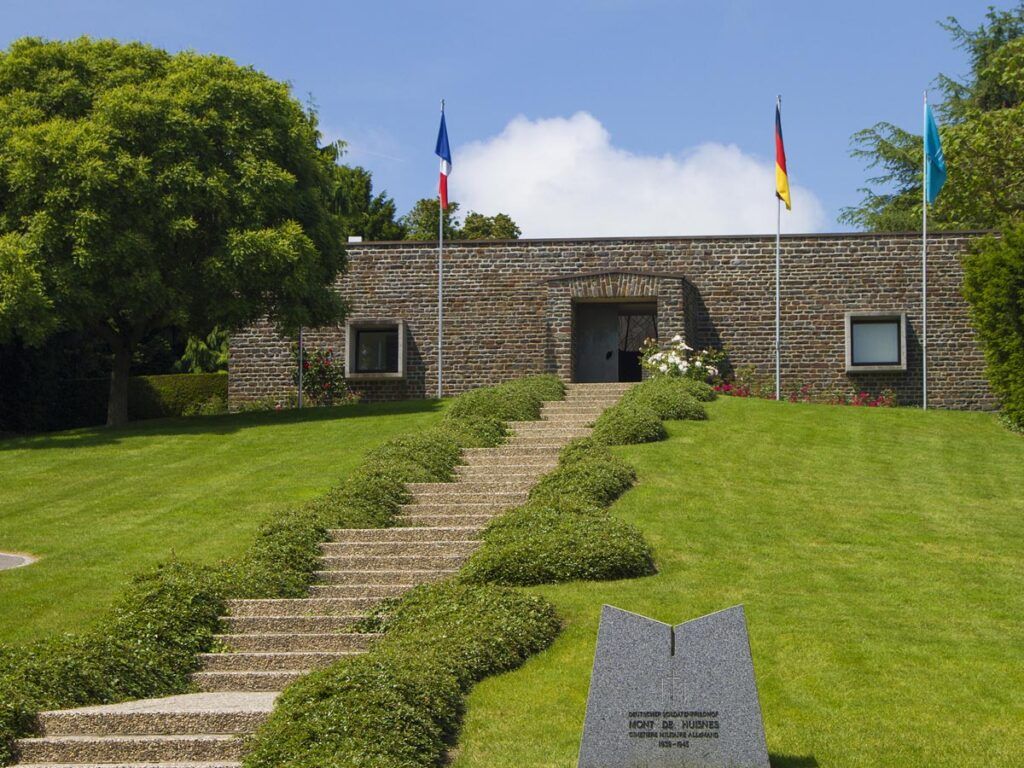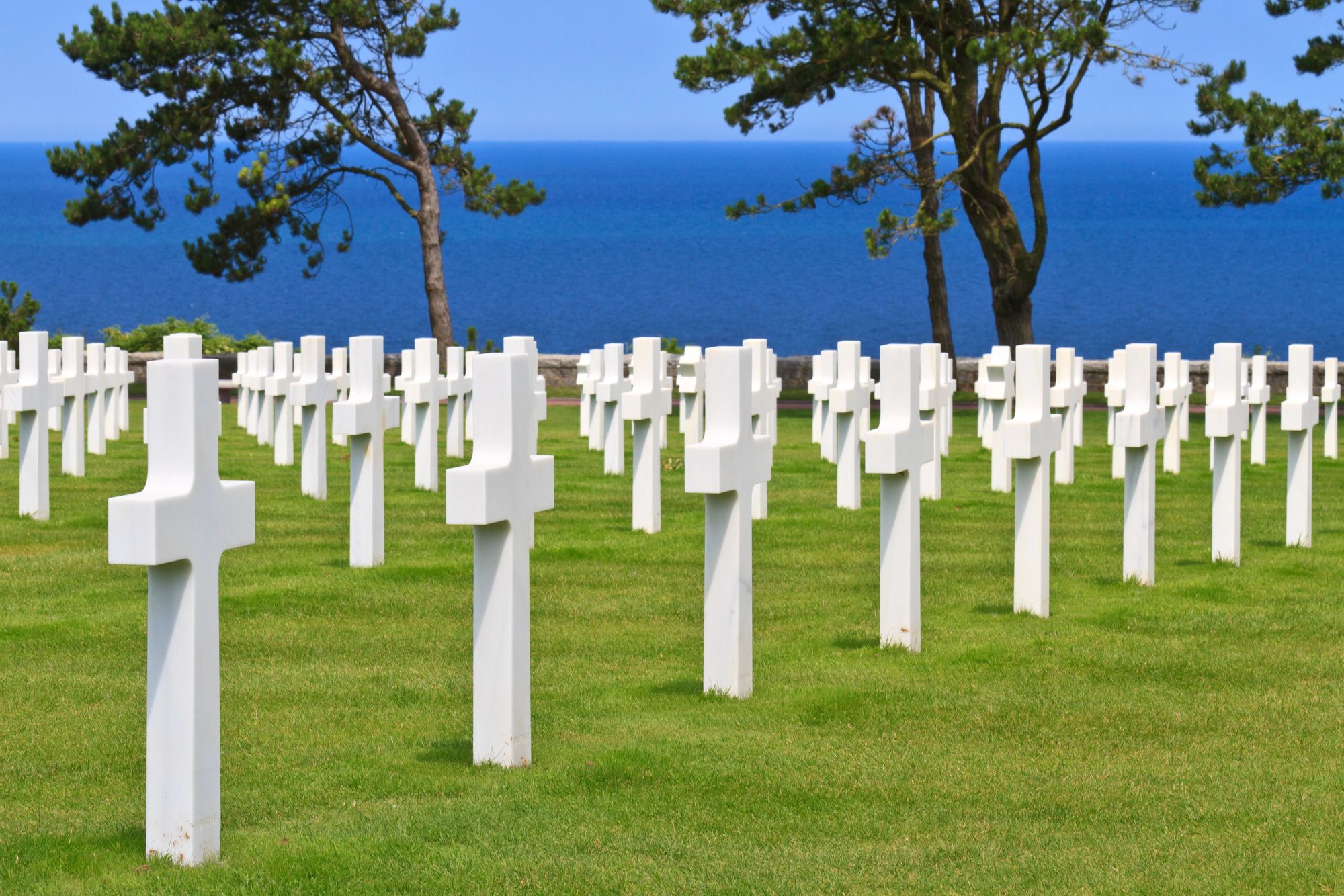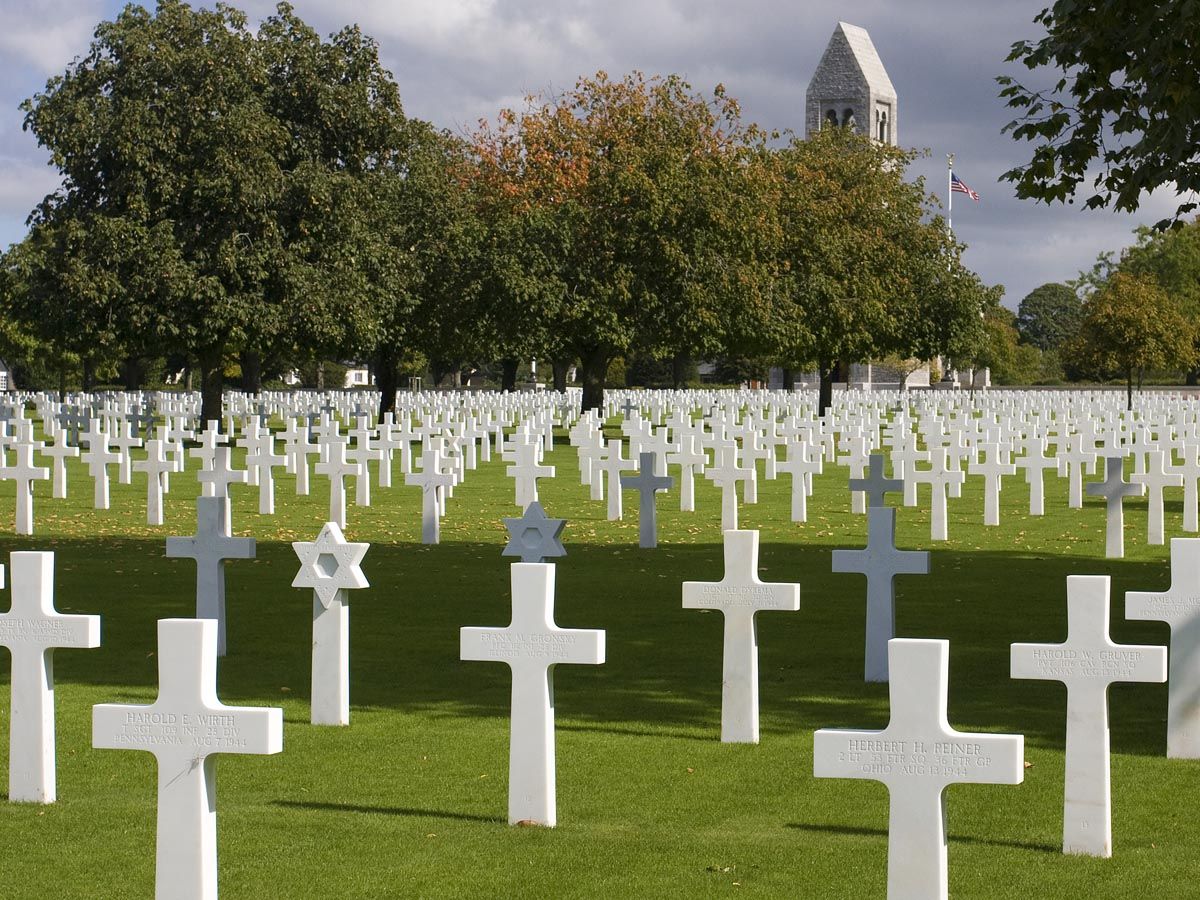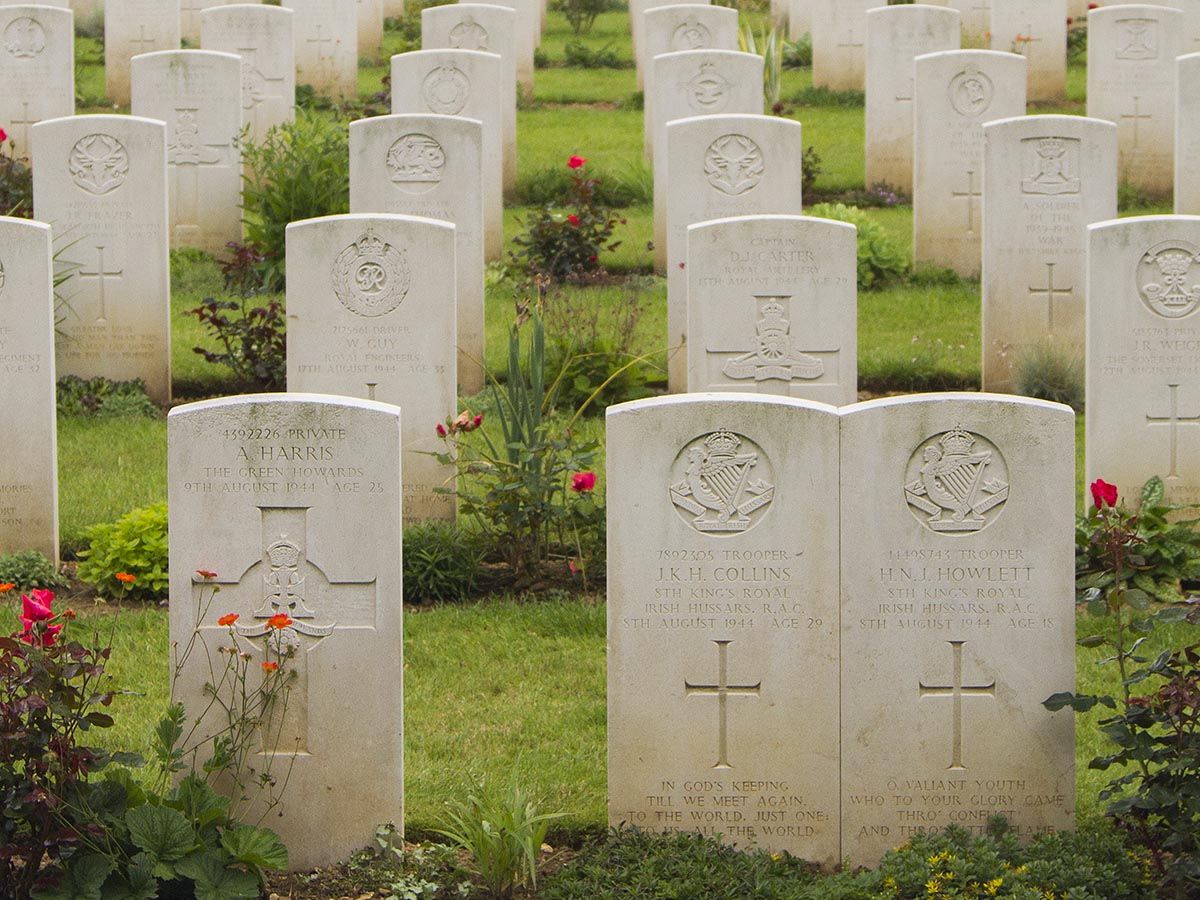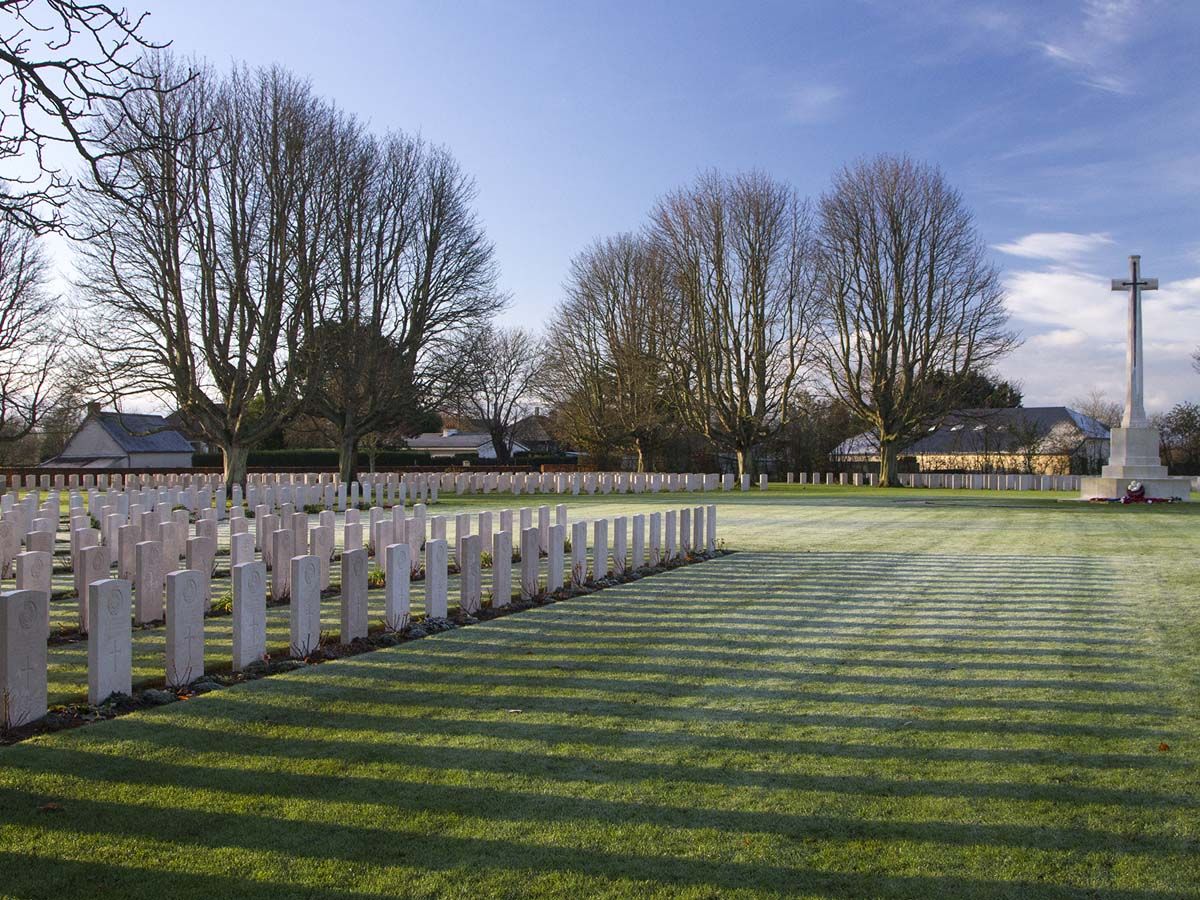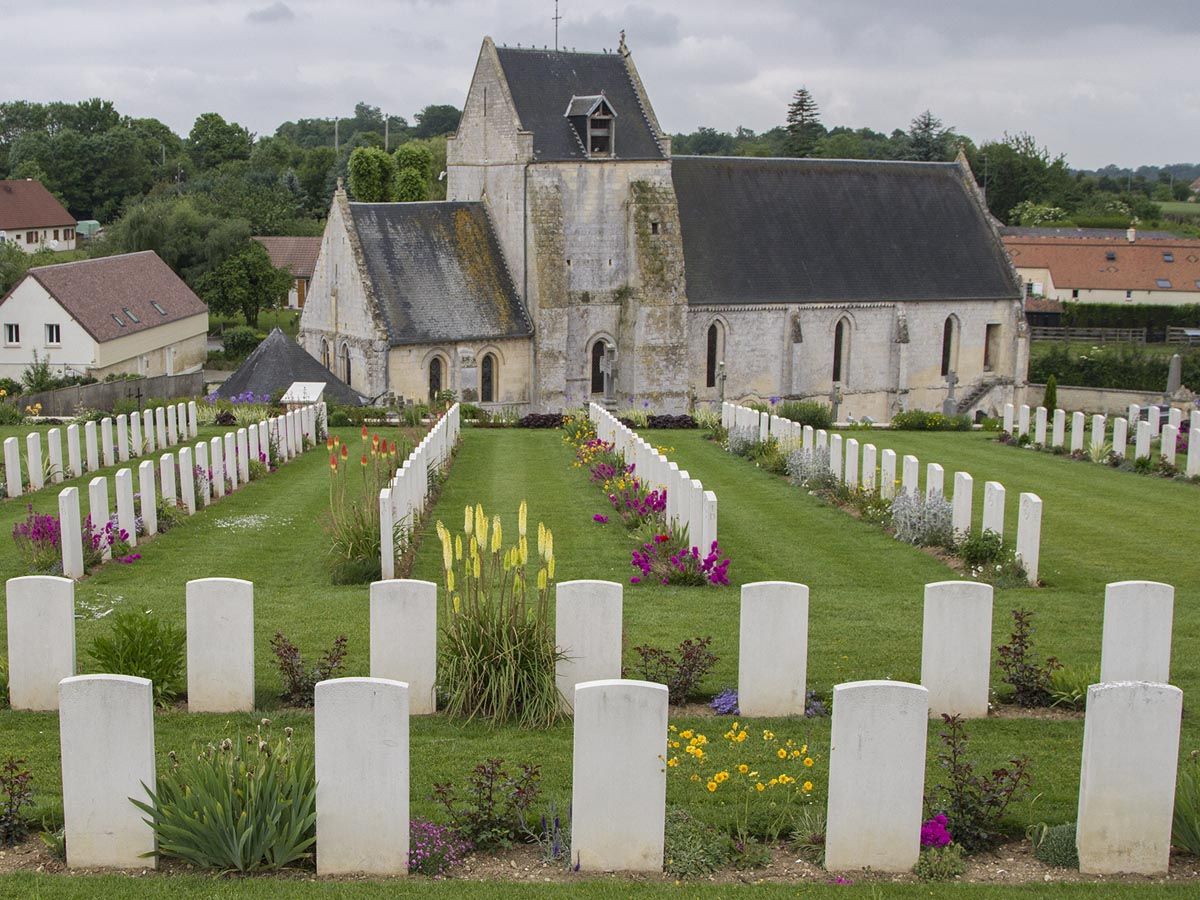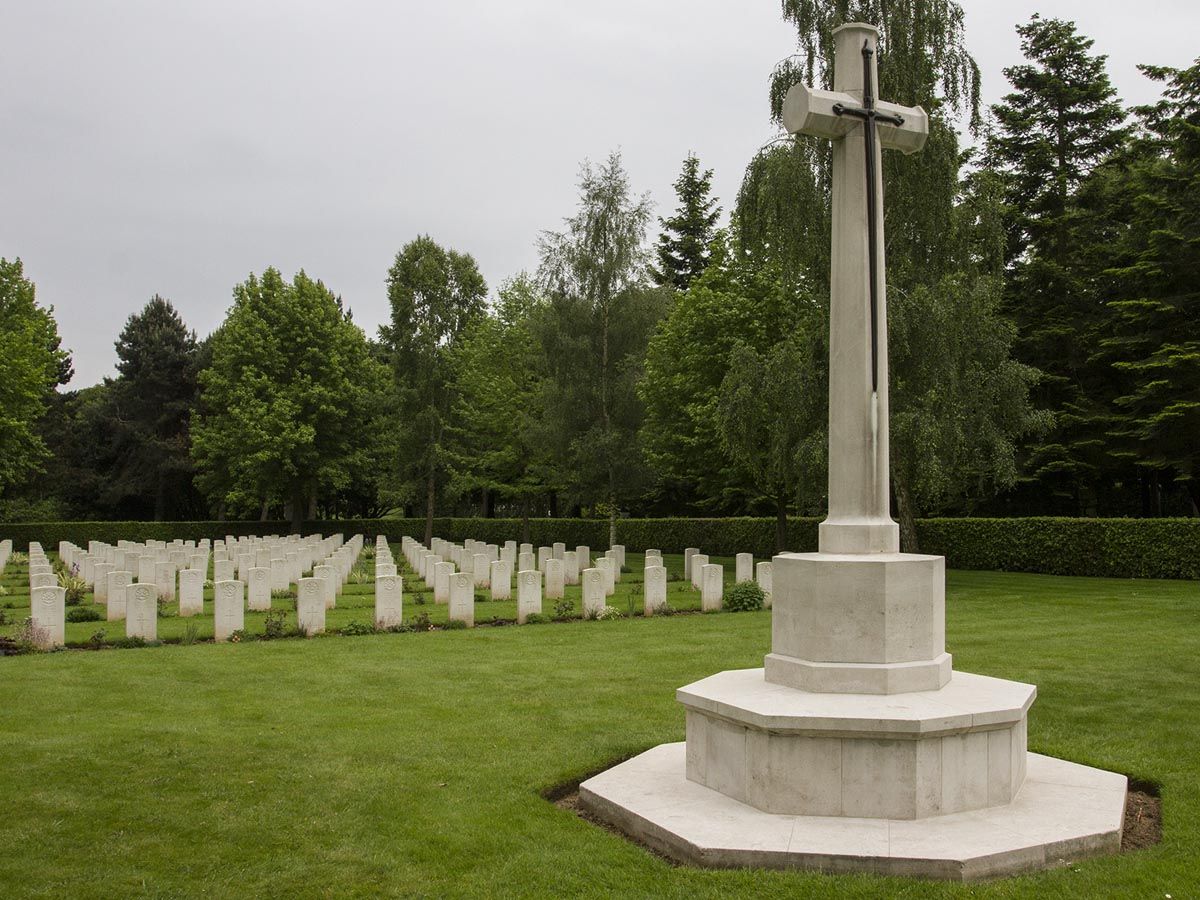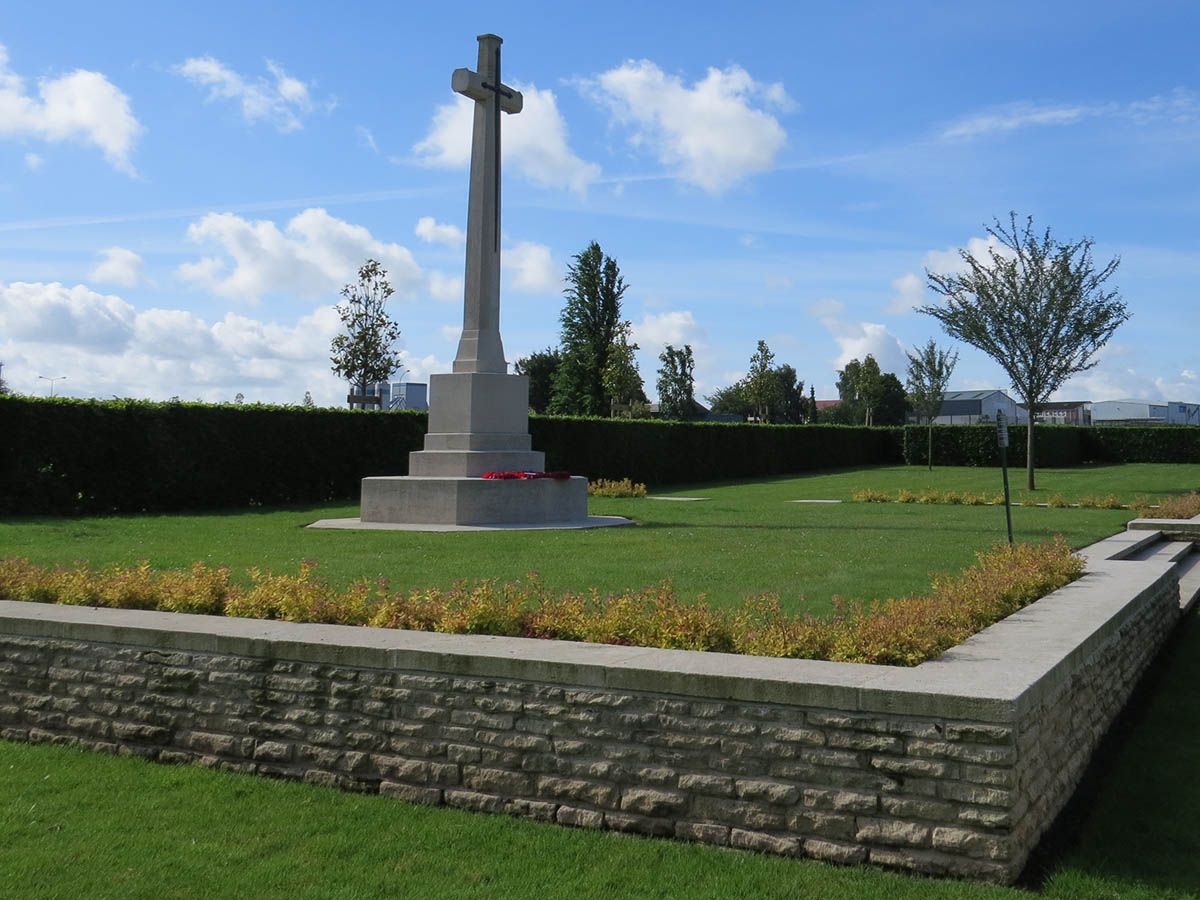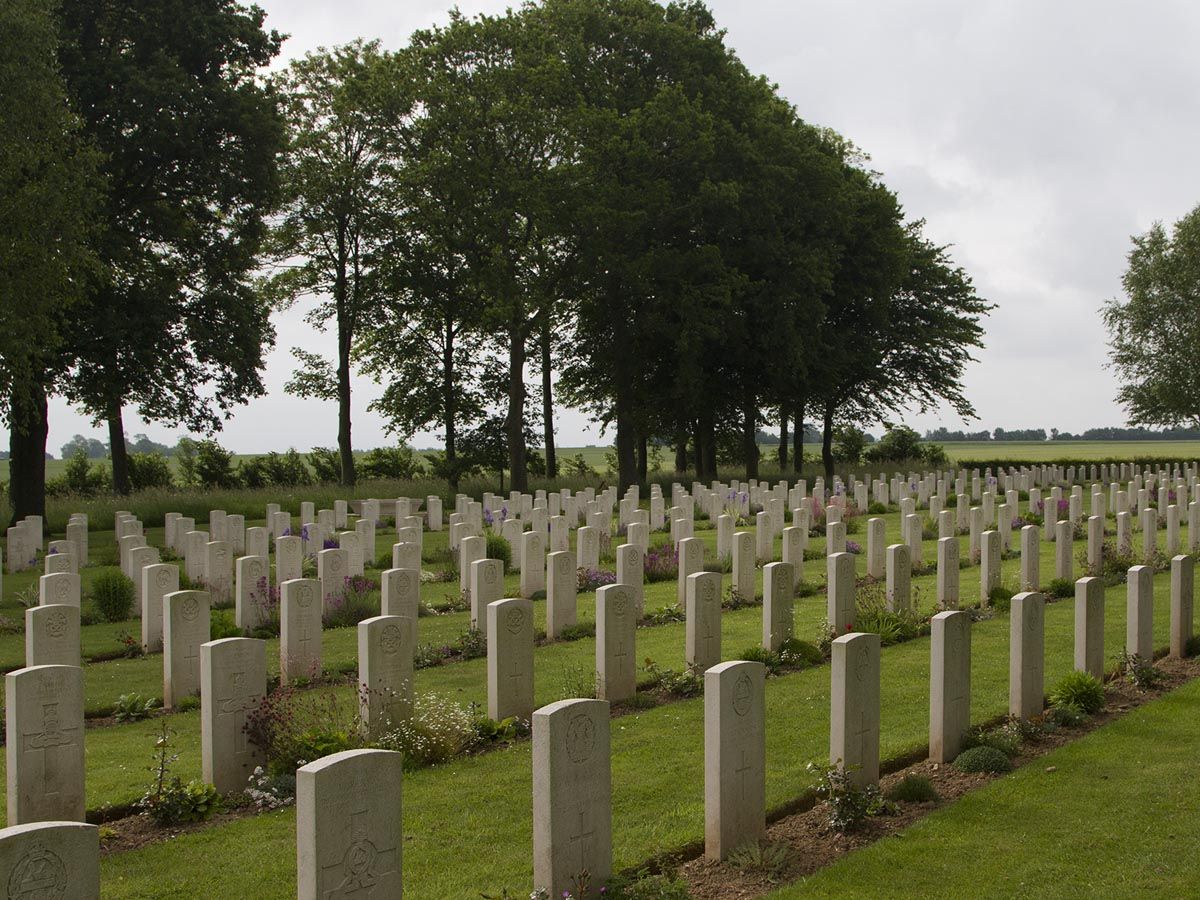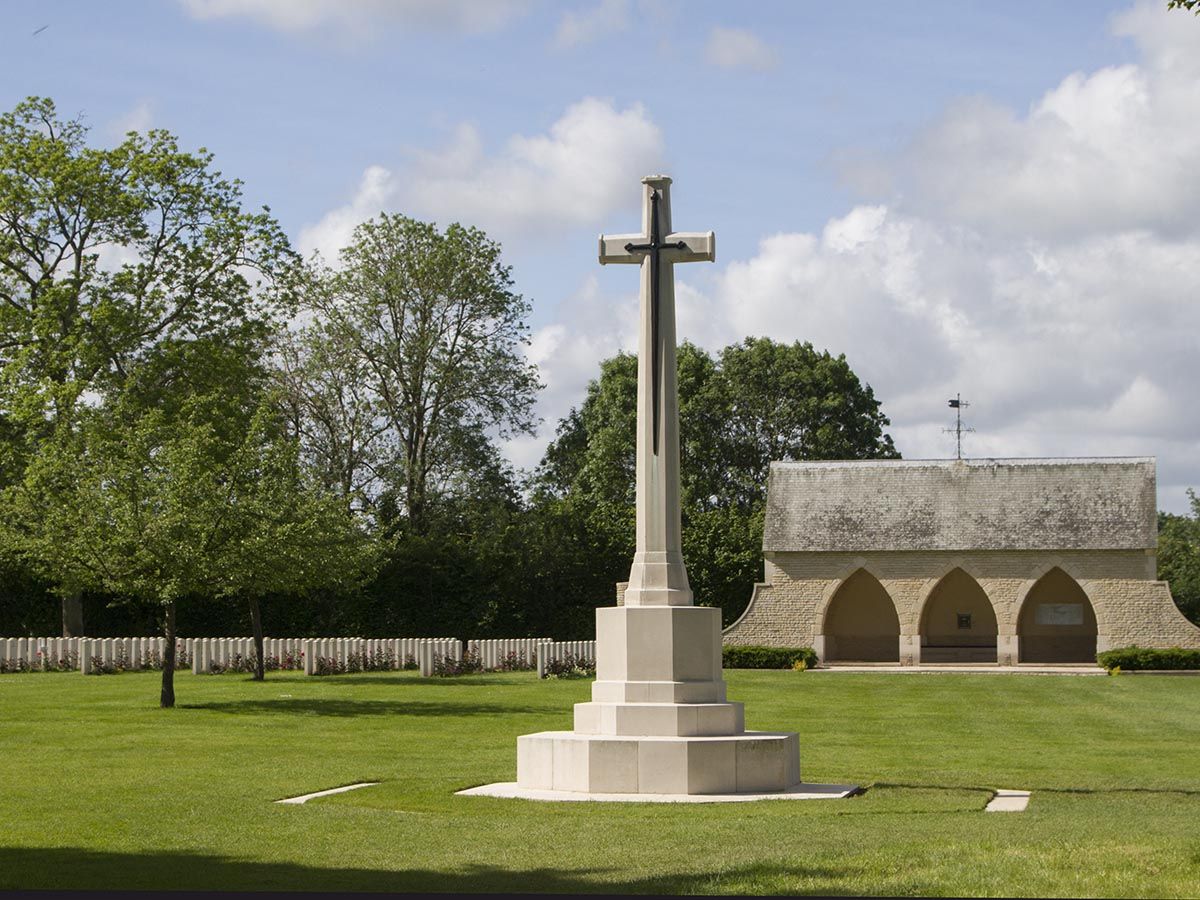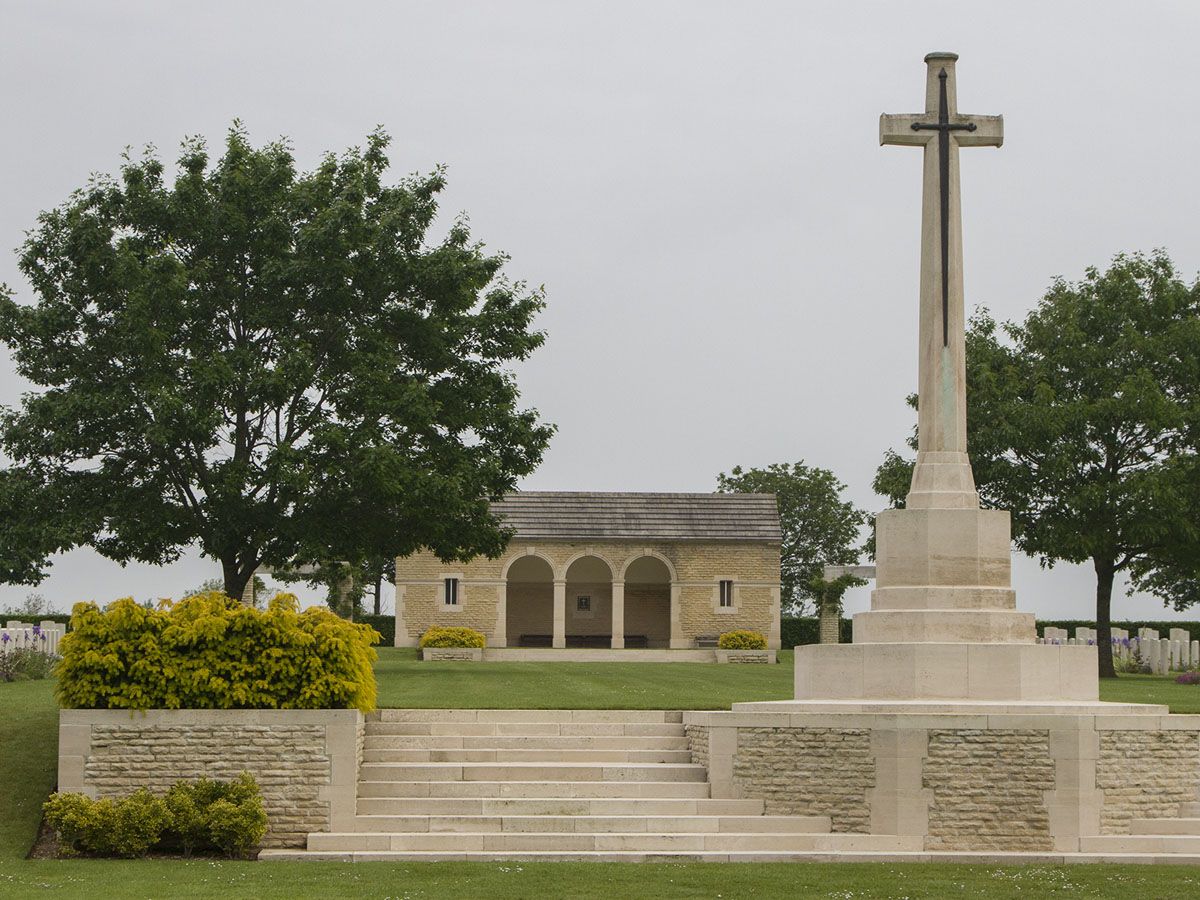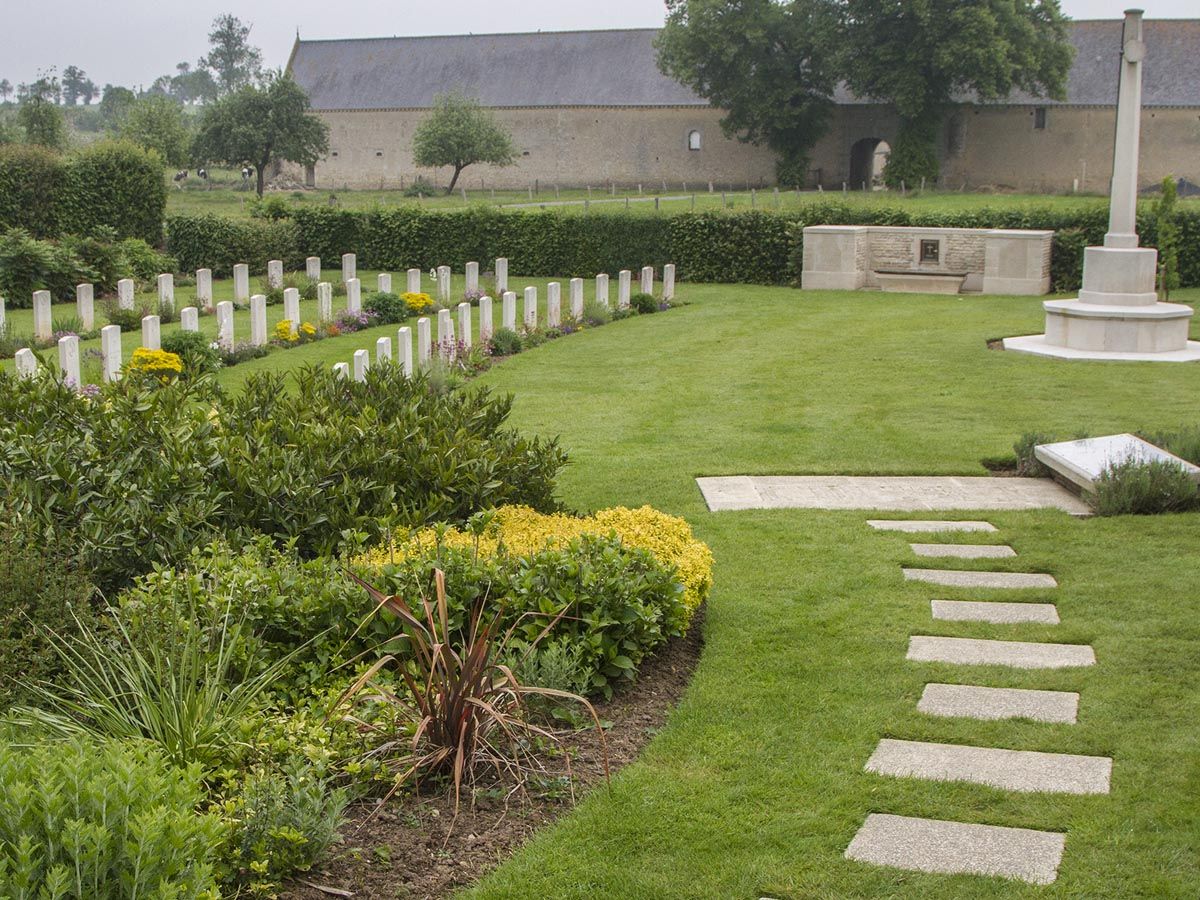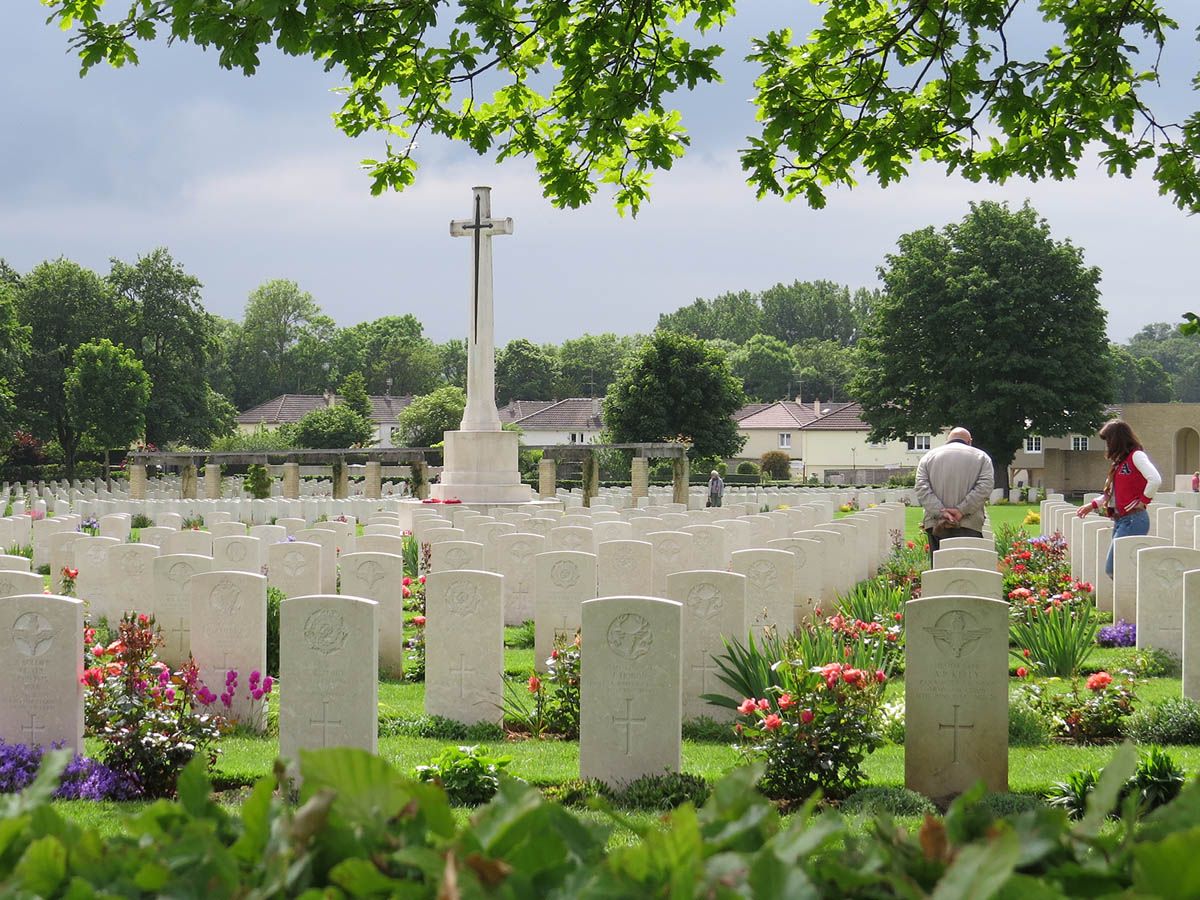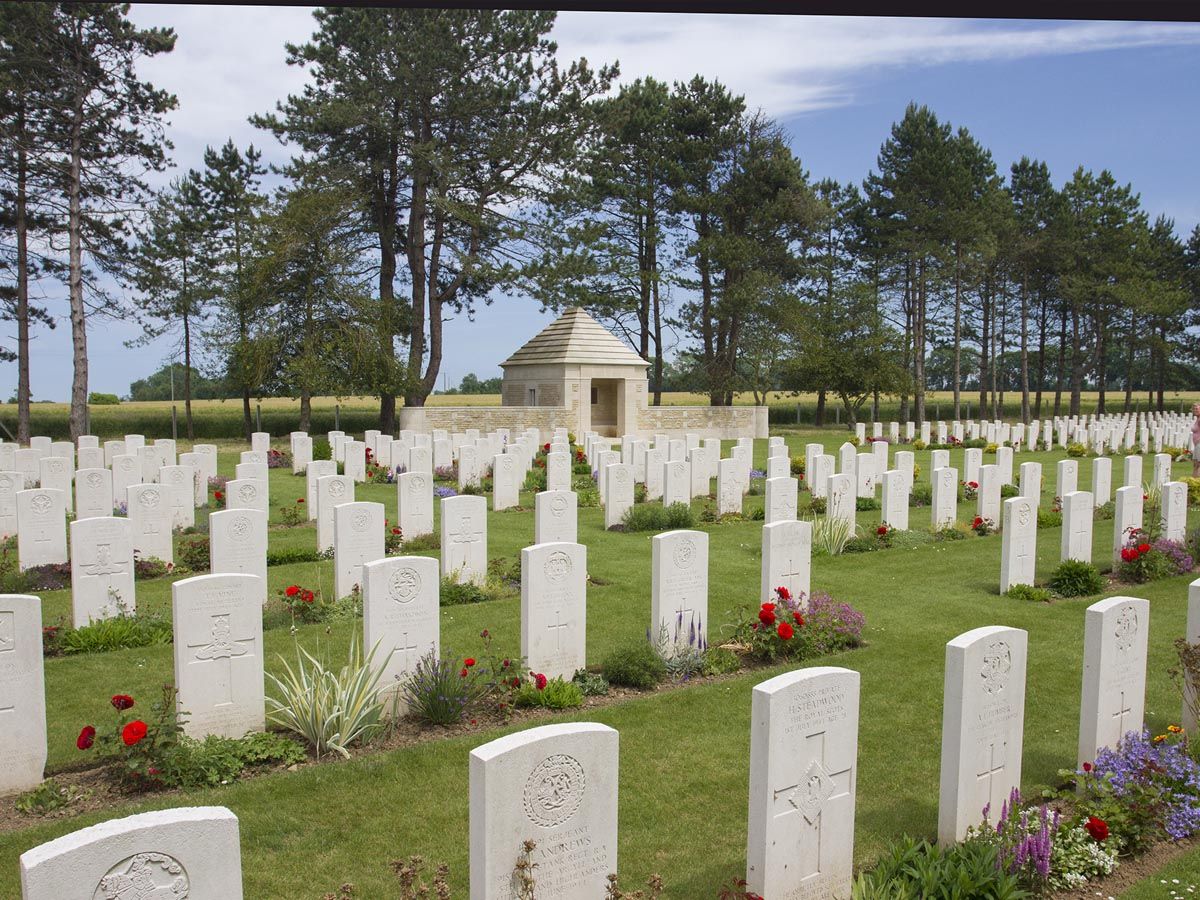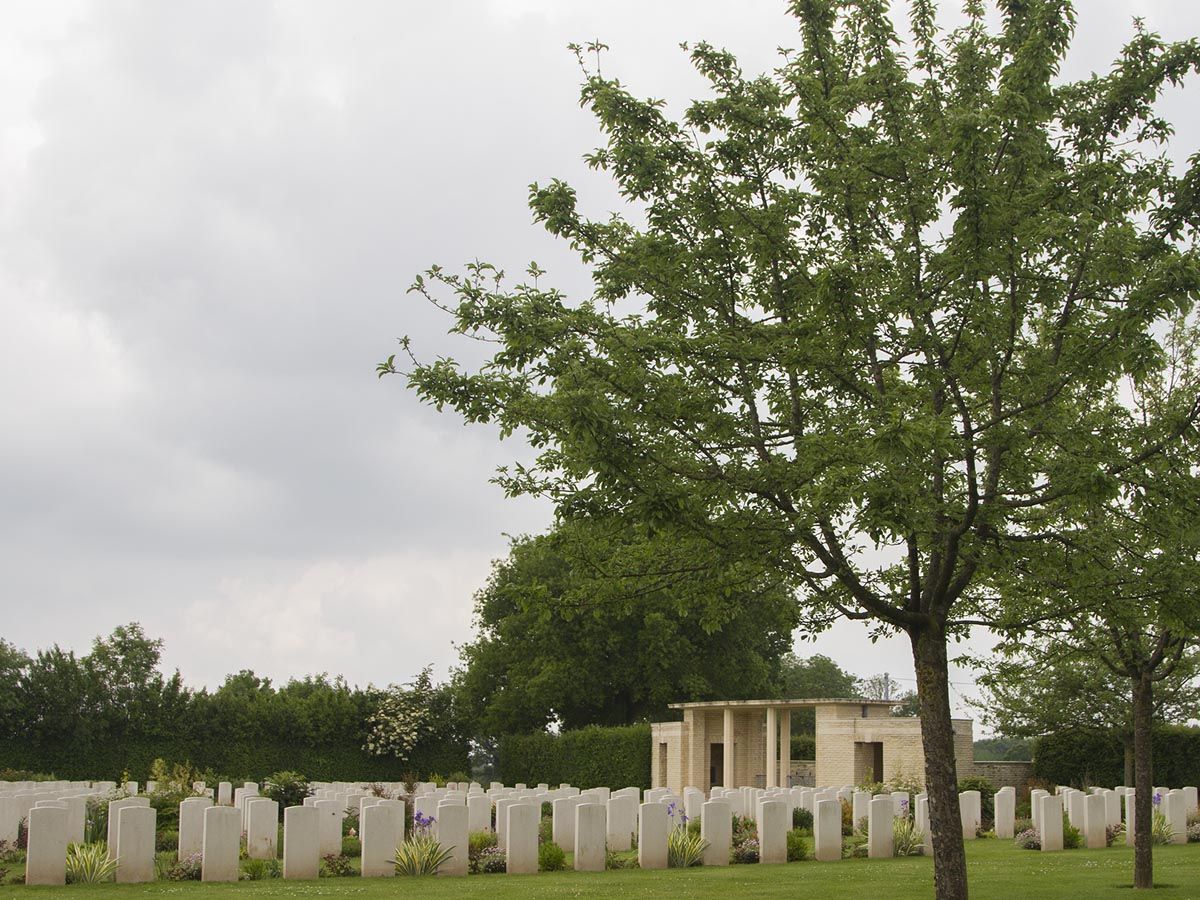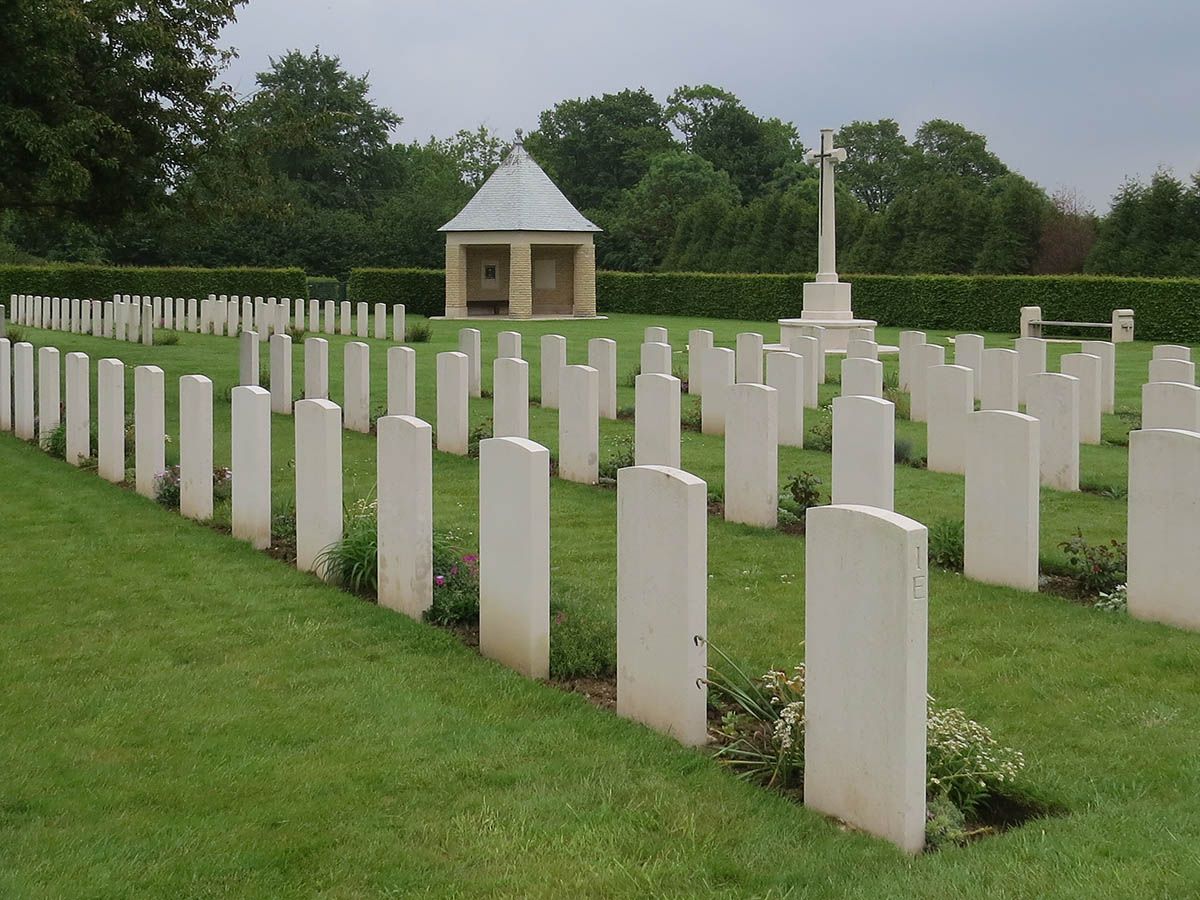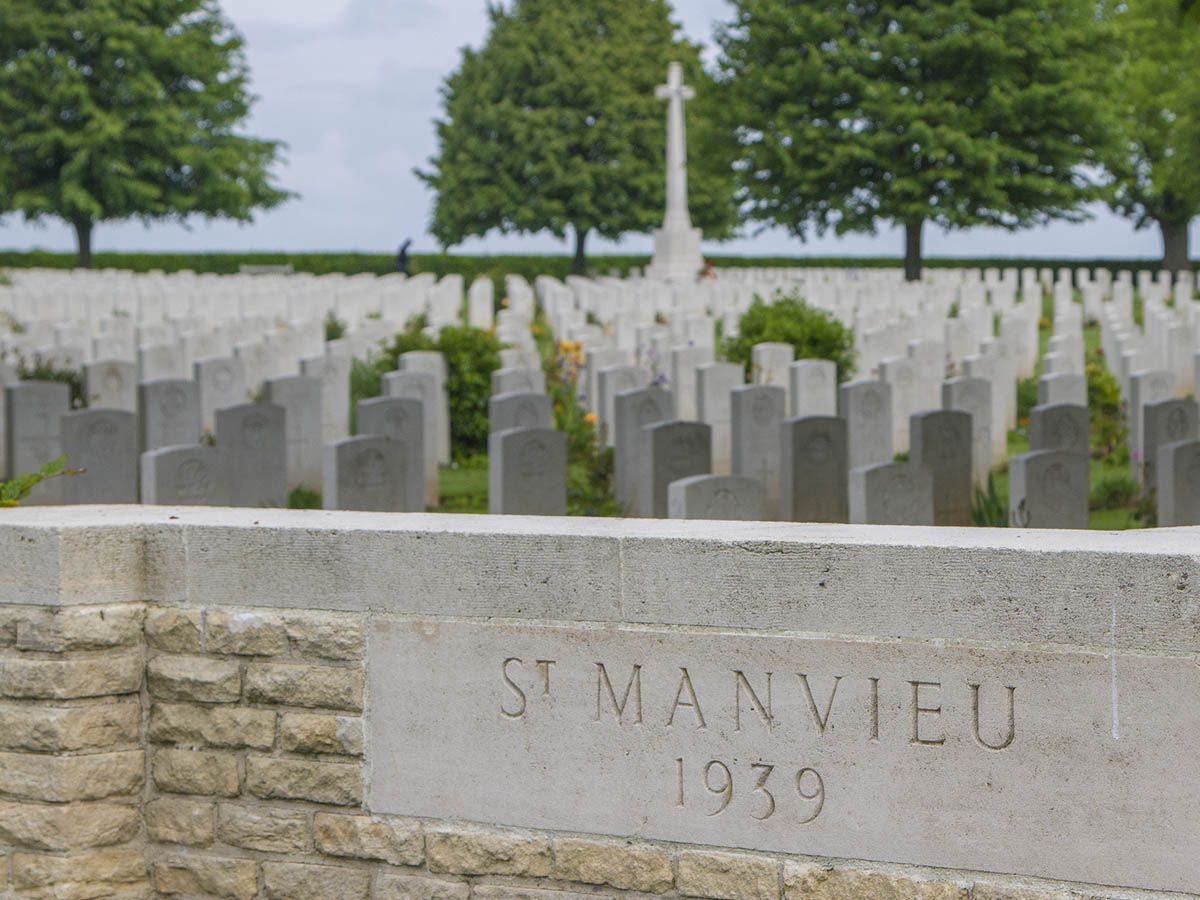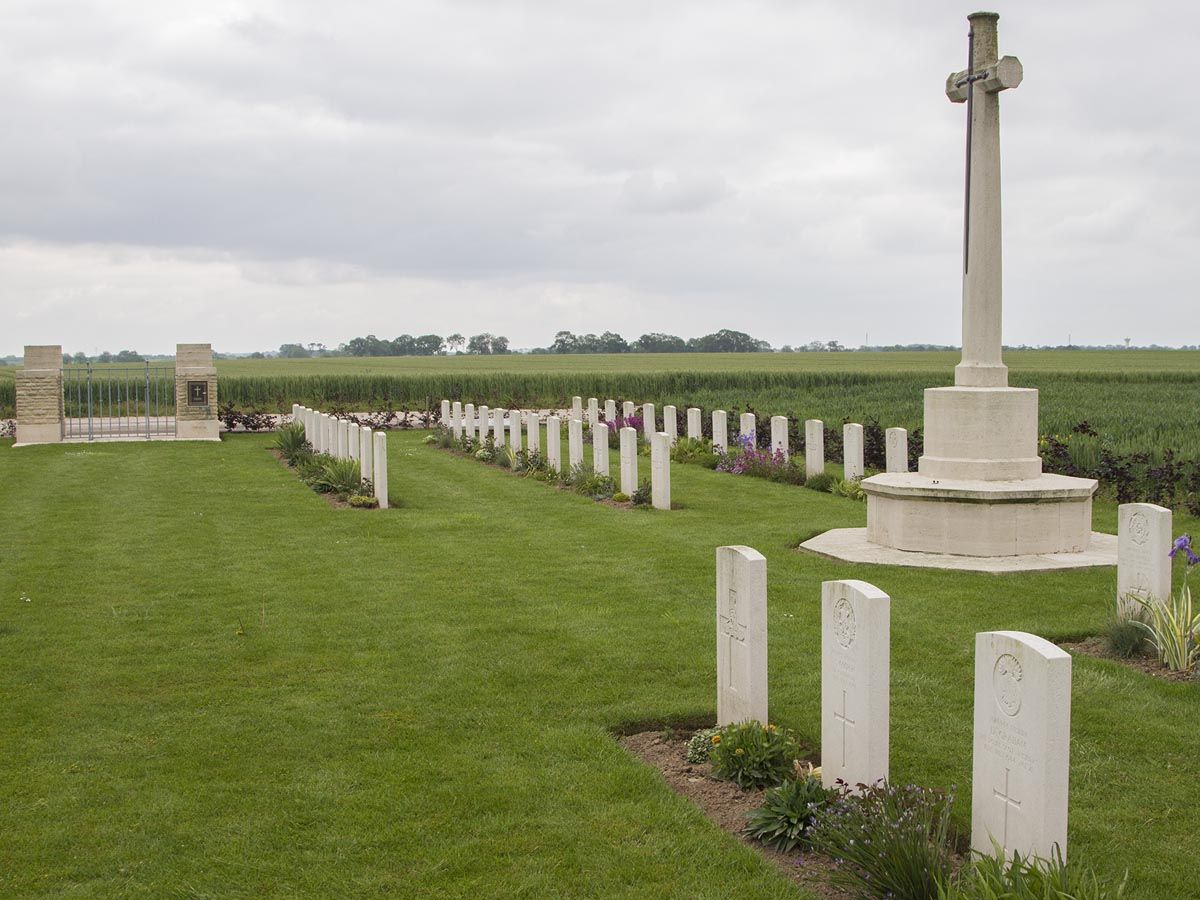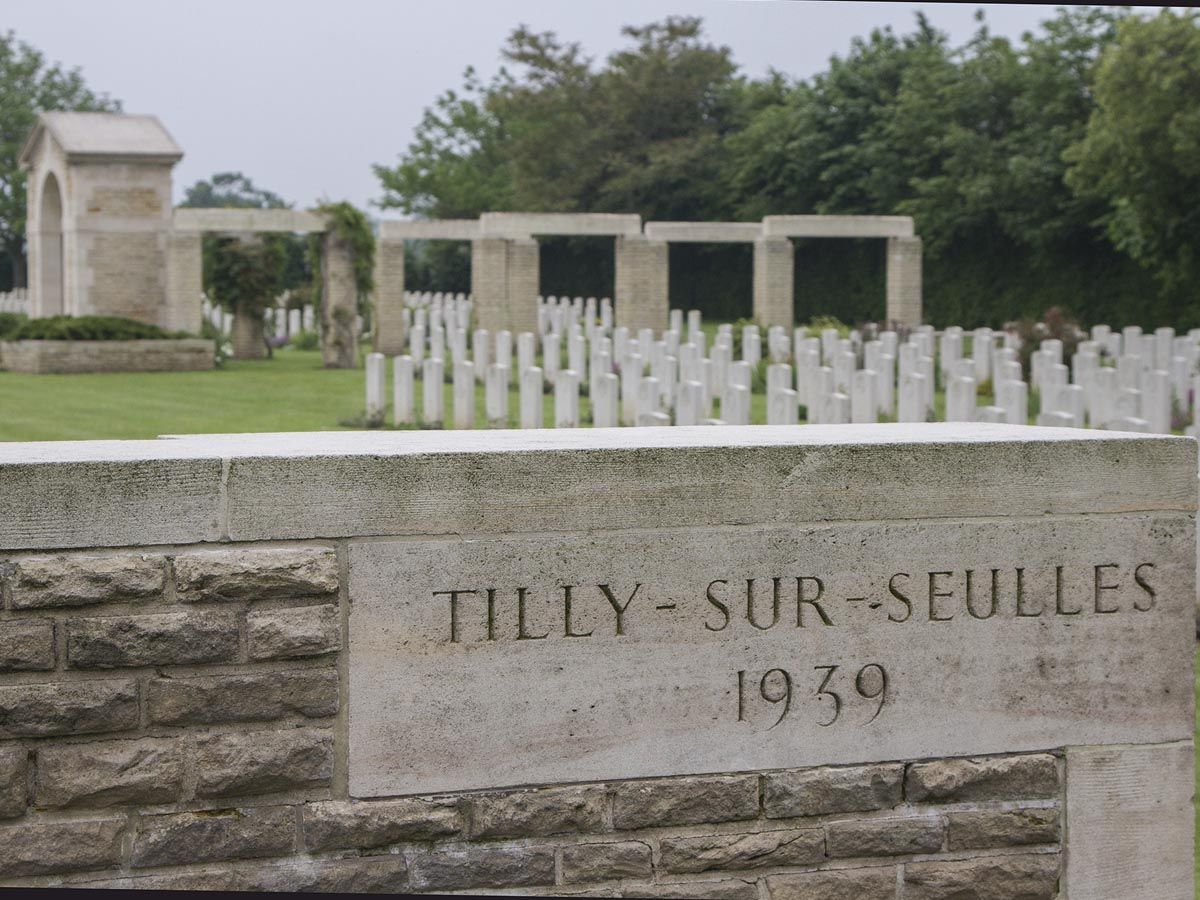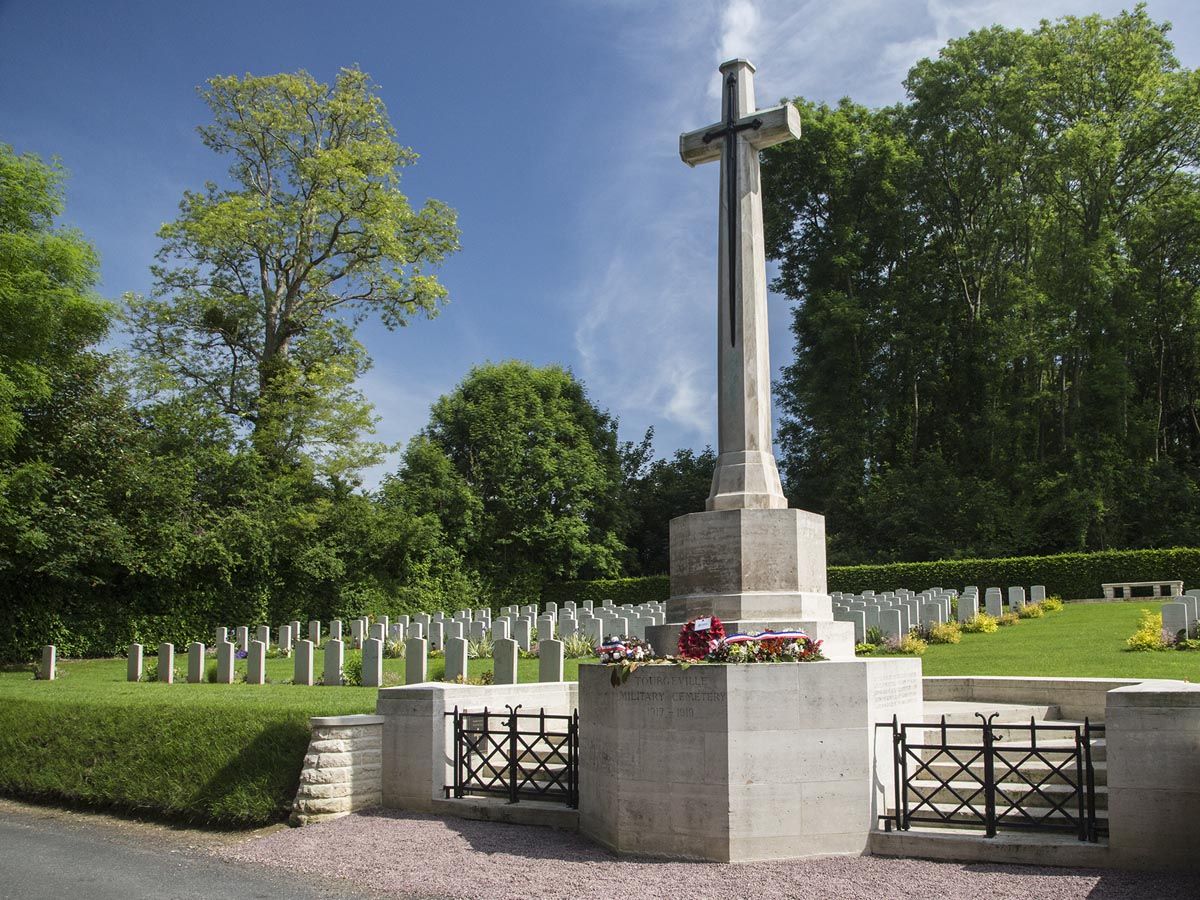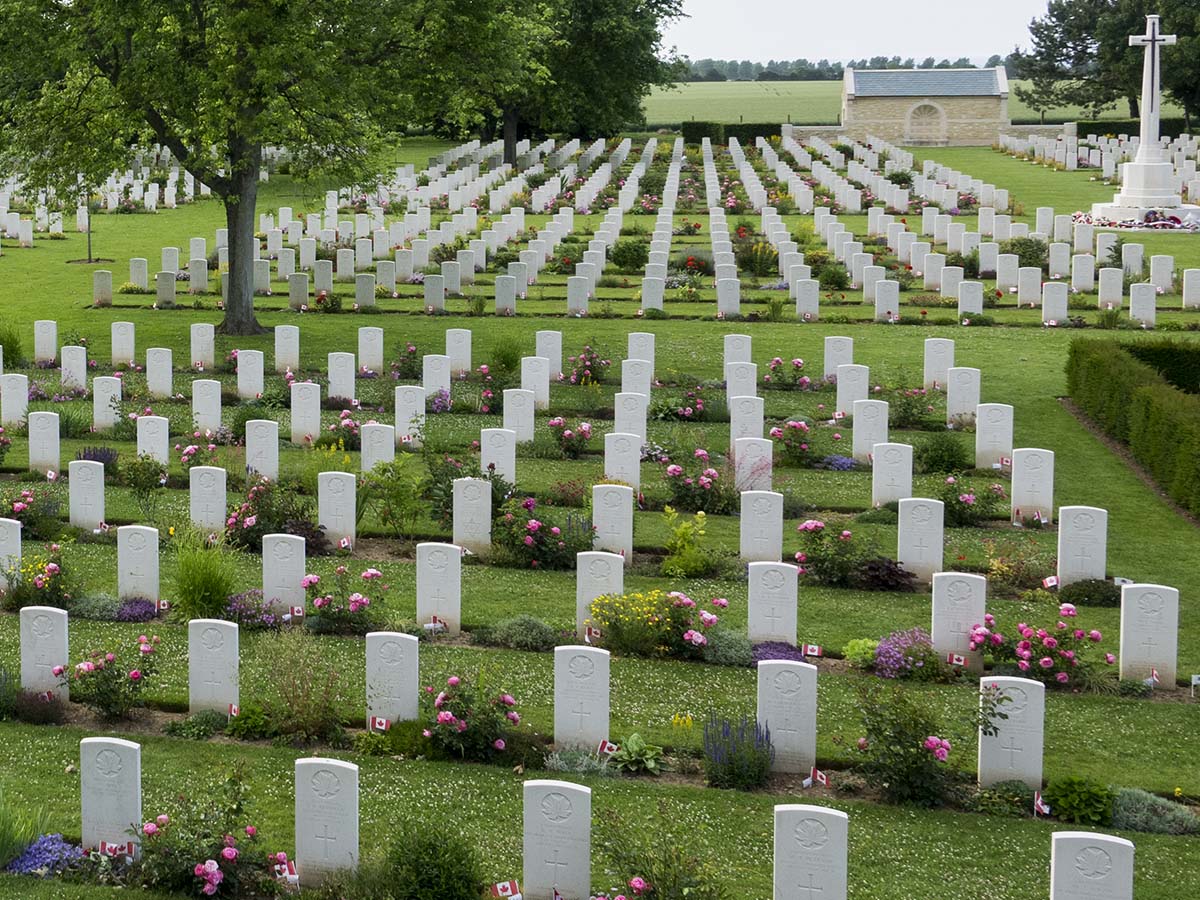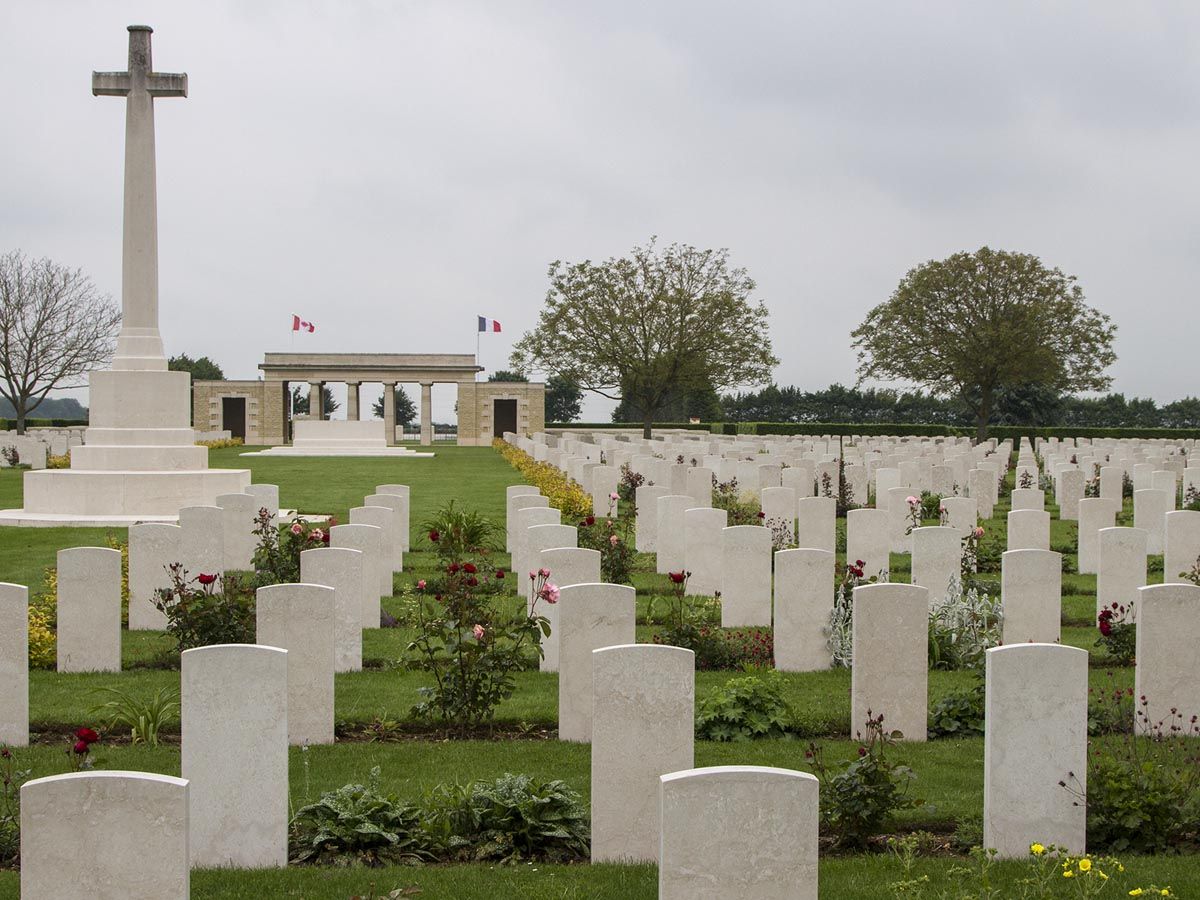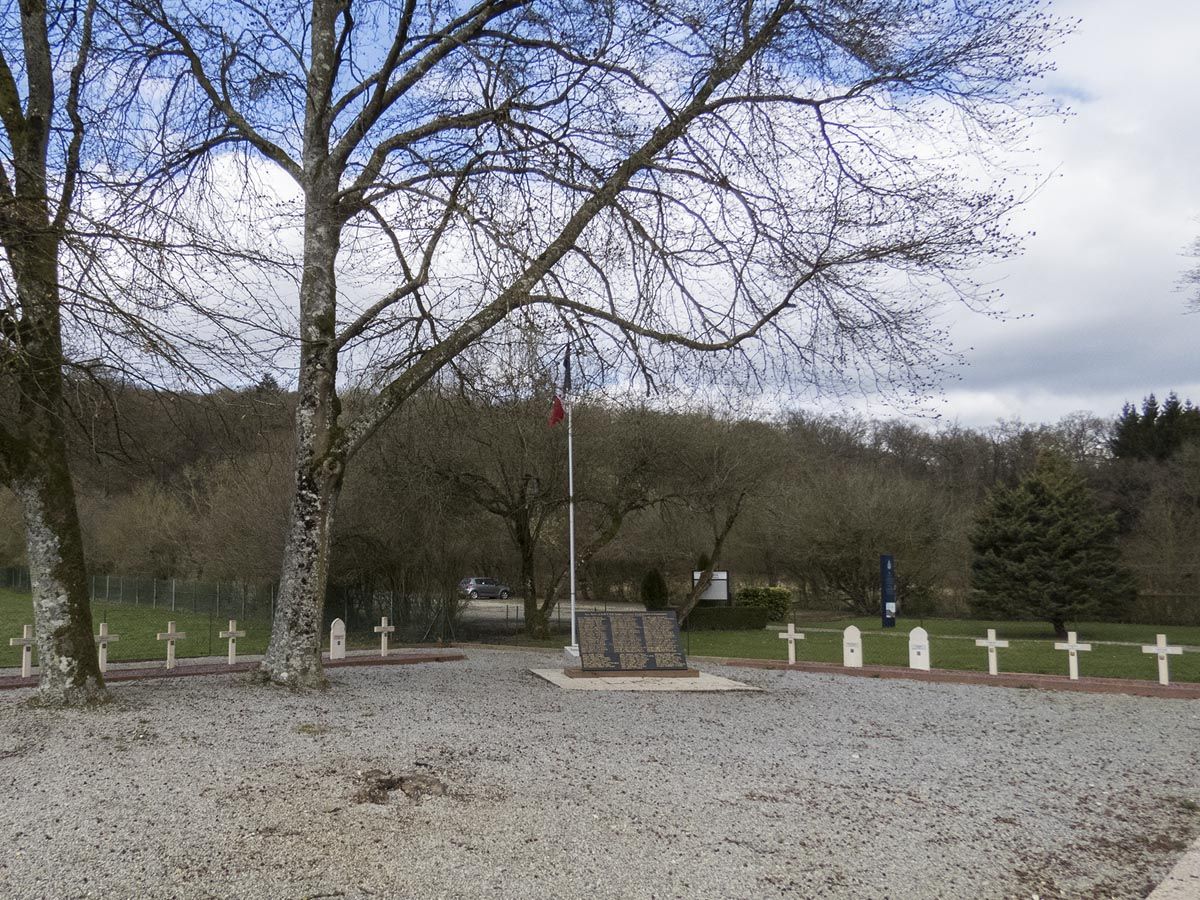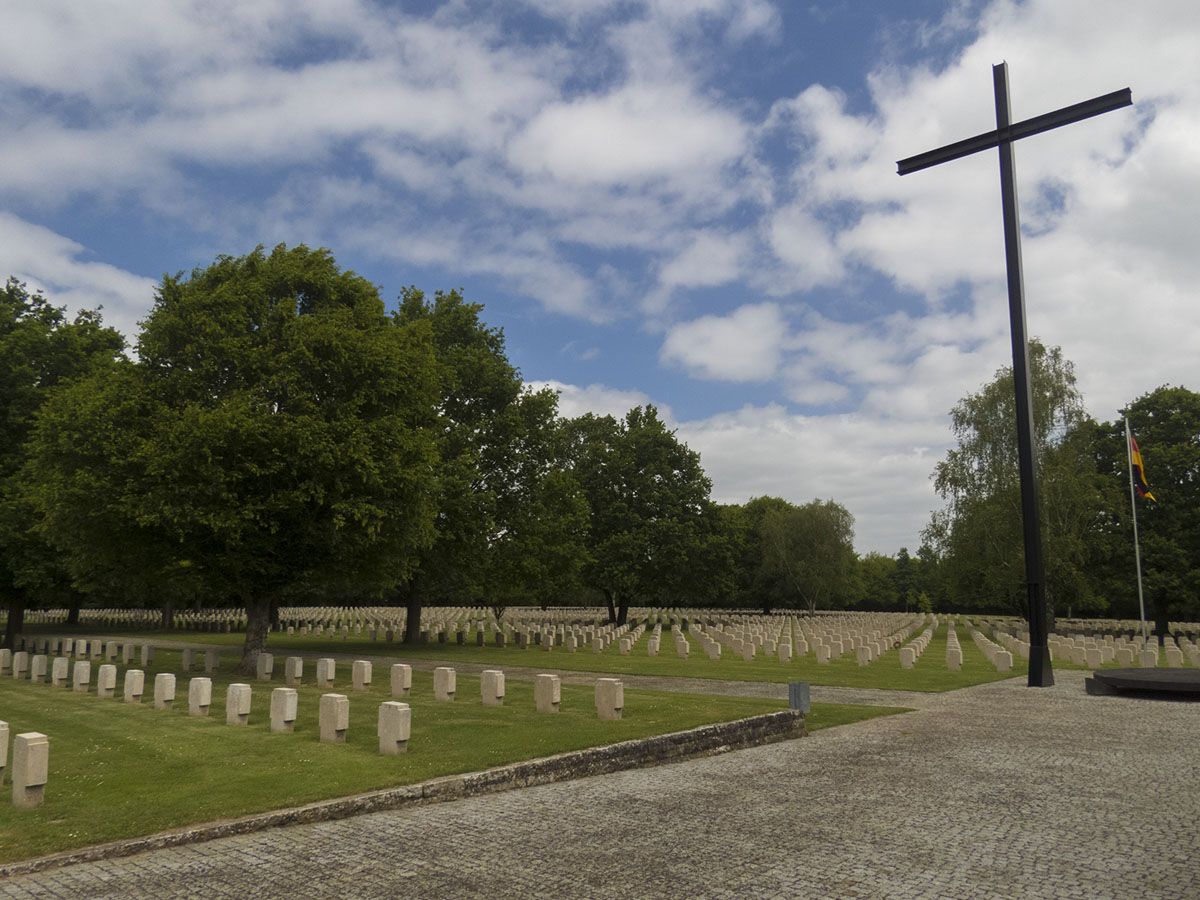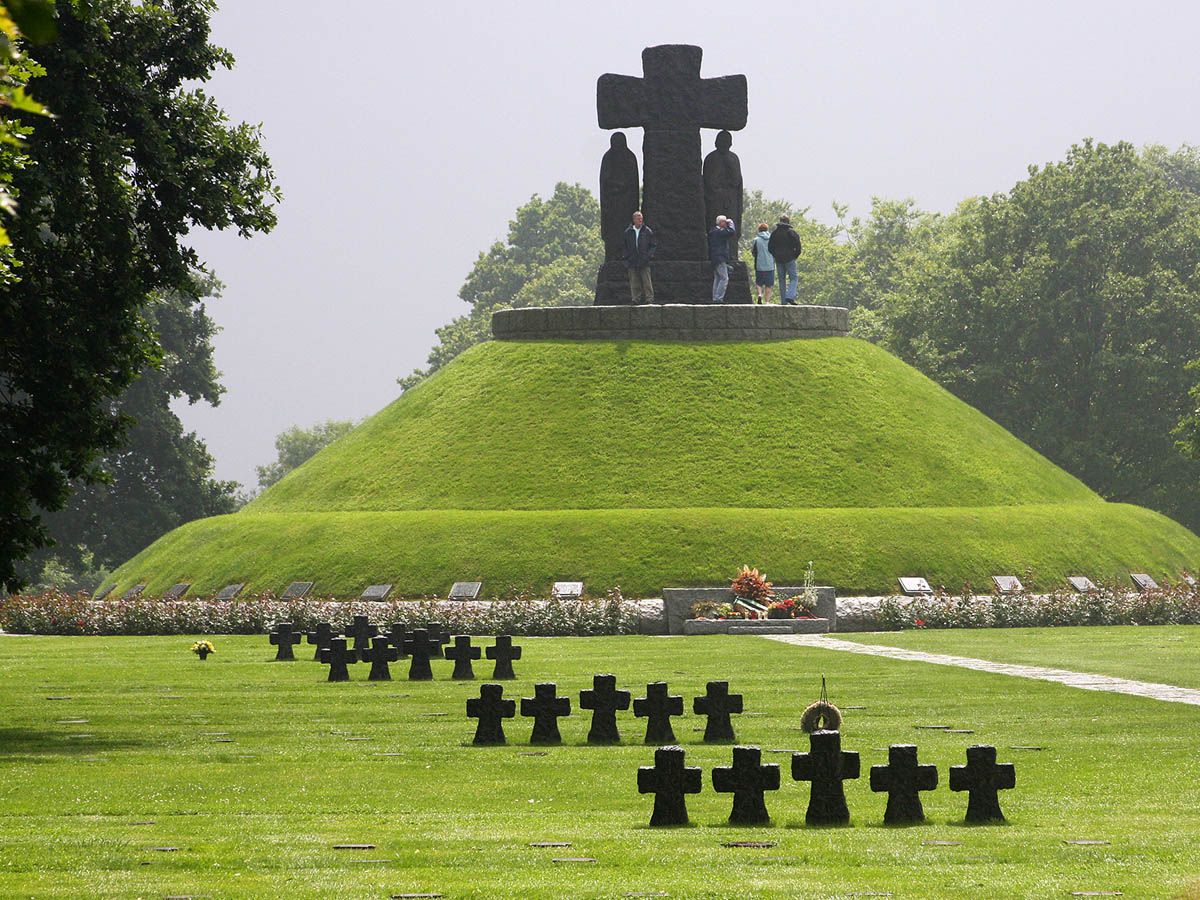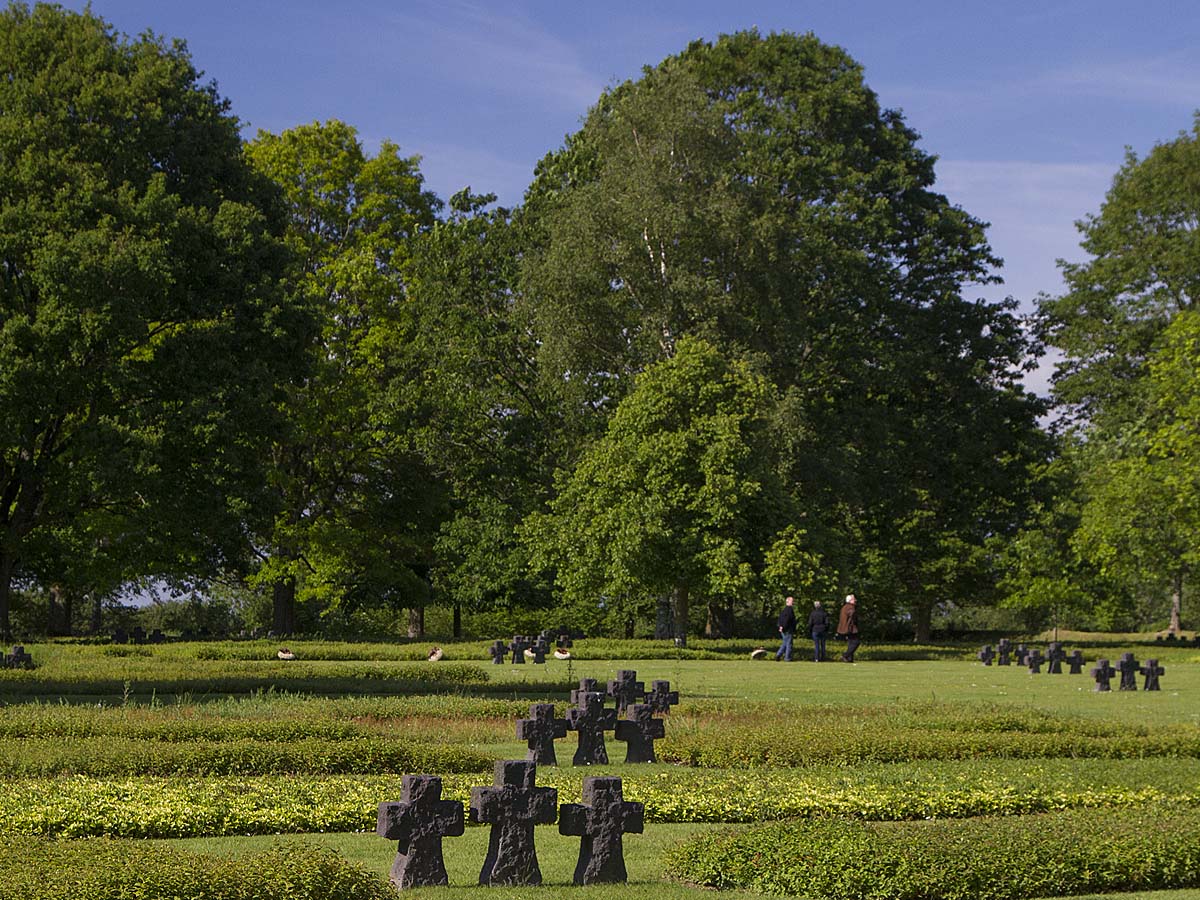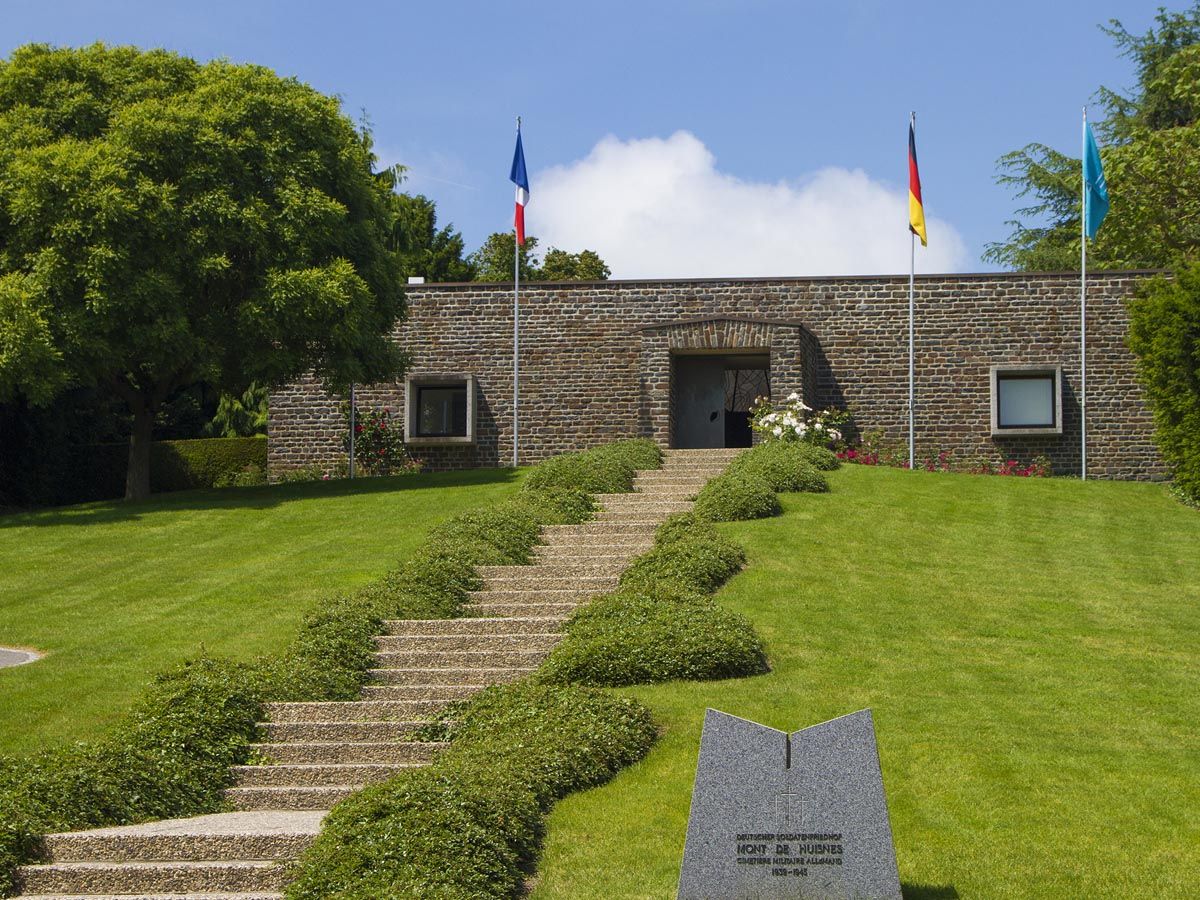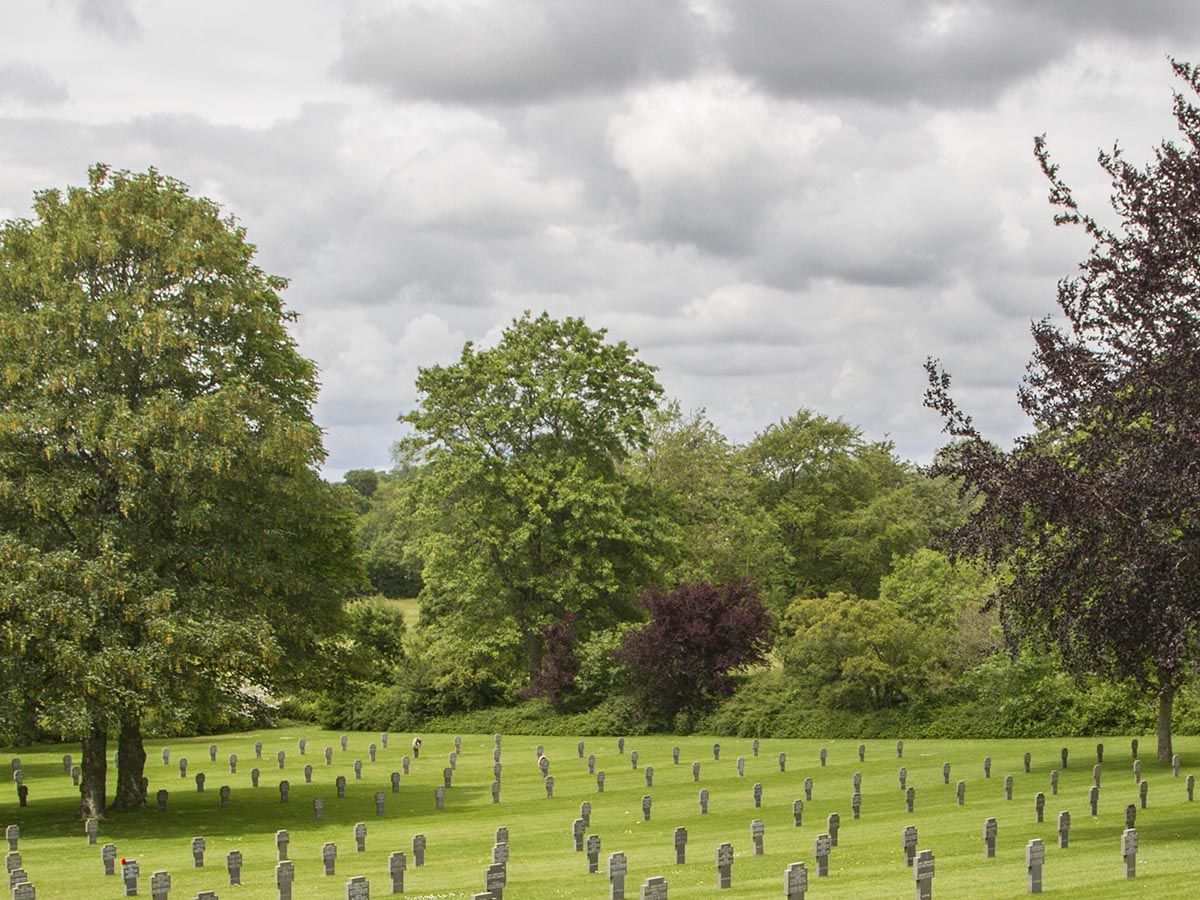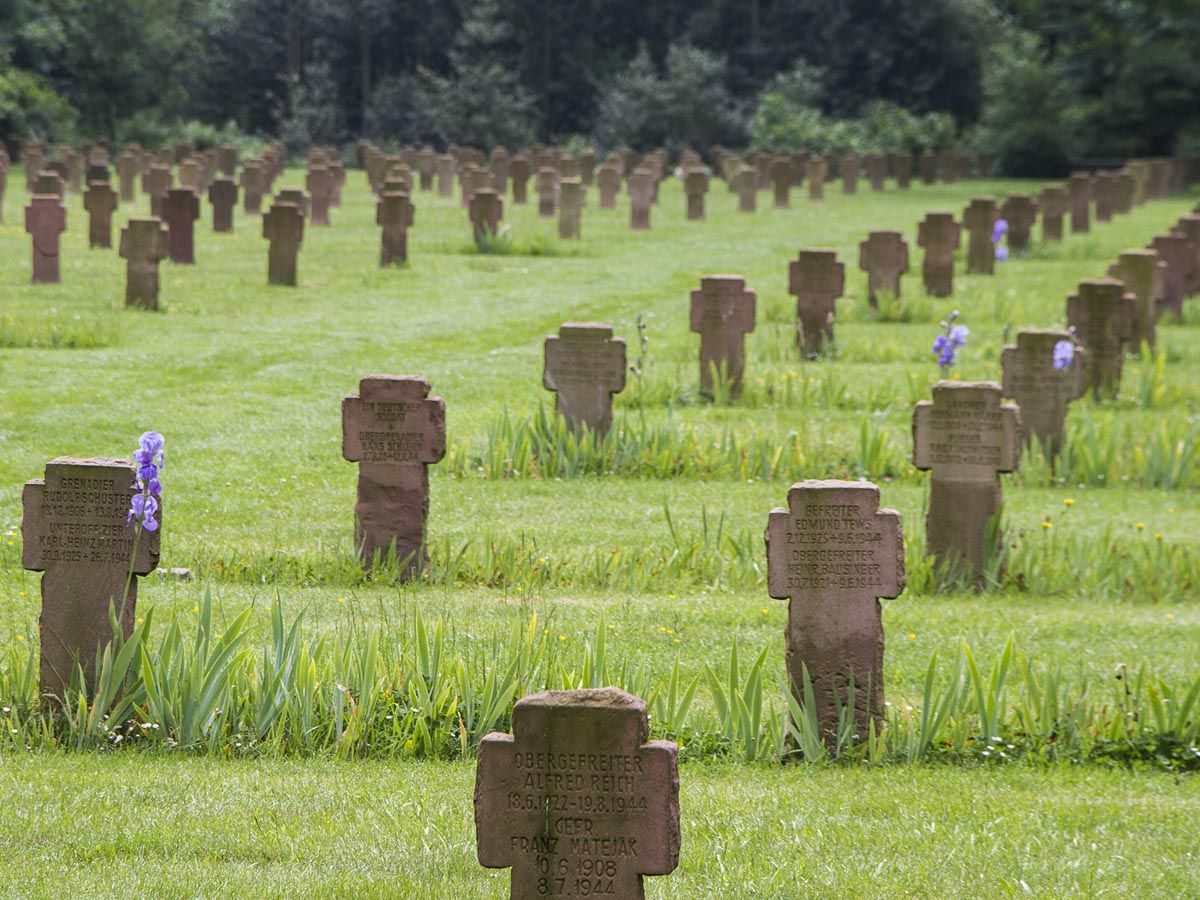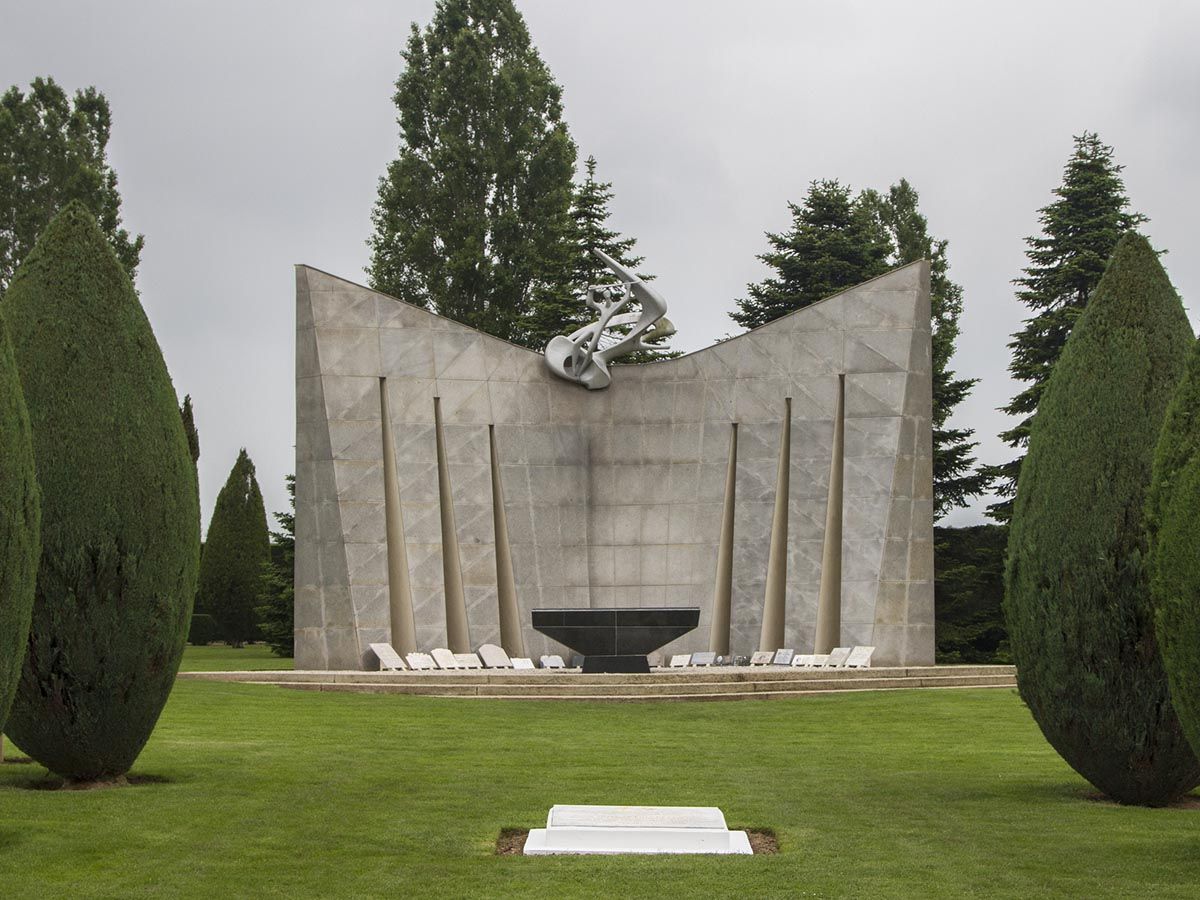Tucked away on a gentle hill near the small commune of Huisnes-sur-Mer in Normandy sits a solemn reminder of World War II’s devastating toll. The Mont-de-Huisnes German War Cemetery is unlike any other military cemetery you’ll visit in France. This unique circular mausoleum contains the remains of 11,956 German soldiers, as well as some Russian volunteers and civilians, making it the only German crypt-style war cemetery on French soil.
As you approach the 30-meter high mound, you’ll notice its understated design – a stark contrast to many war memorials. The cemetery features a ring of chambers surrounding a central monument, each chamber carefully preserving the memory of those who lost their lives far from home. When planning your Normandy journey, this site offers a powerful counterpoint to the Allied cemeteries in the region.
Just a short distance from the famous Mont-Saint-Michel, this lesser-known but equally moving destination invites you to reflect on war’s universal tragedy. Your visit allows for a moment of quiet contemplation amid the beautiful Norman countryside, reminding us that remembrance crosses national boundaries.
History and Significance
The Mont-de-Huisnes German War Cemetery stands as a solemn reminder of the human cost of World War II. This unique mausoleum-style cemetery holds nearly 12,000 German soldiers who died during the war, representing one of the most distinctive military burial sites in France.
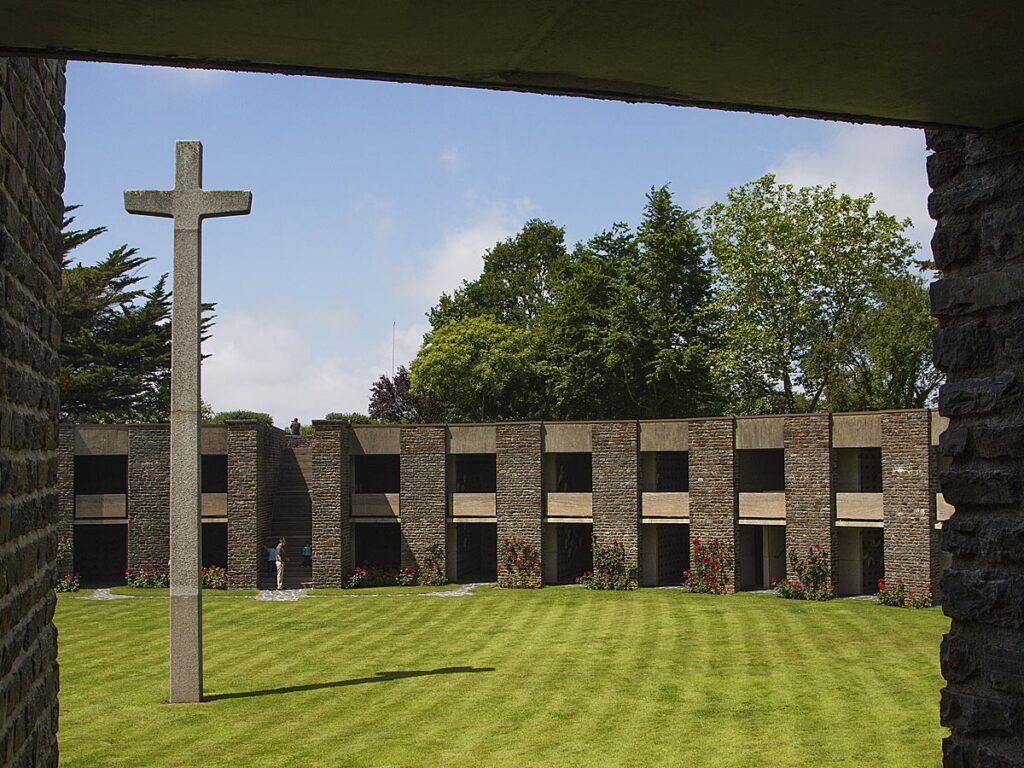
World War II Context
During World War II, Normandy became the site of massive military operations following the D-Day landings in June 1944. As Allied forces pushed inland, fierce fighting resulted in heavy casualties on both sides. German soldiers who fell during these battles were initially buried in temporary graves scattered across the French countryside.
Many of the soldiers interred at Mont-de-Huisnes died during the Battle of Normandy, which lasted about three months. These men came from various German military units that fought against the Allied advance.
The cemetery holds remains from several French departments, including Morbihan and Ille-et-Vilaine in Brittany, gathering what were once dispersed burial sites into a single memorial location.
Construction of the Cemetery
The Mont-de-Huisnes cemetery was officially inaugurated in 1963, nearly two decades after the war ended. It’s designed as a “Totenburg” or “Fortress of the dead,” making it architecturally significant as the only German crypt-type war grave in France.
Unlike traditional cemeteries with individual graves, Mont-de-Huisnes features a circular structure built into the hillside. The design includes a ring of chambers surrounding a central monument.
Each chamber houses the remains of fallen German soldiers. In total, 11,956 soldiers rest here, their names recorded on plaques within the mausoleum chambers.
The construction represents a deliberate effort to provide dignity to the fallen while creating a place for remembrance and reconciliation after years of bitter conflict.
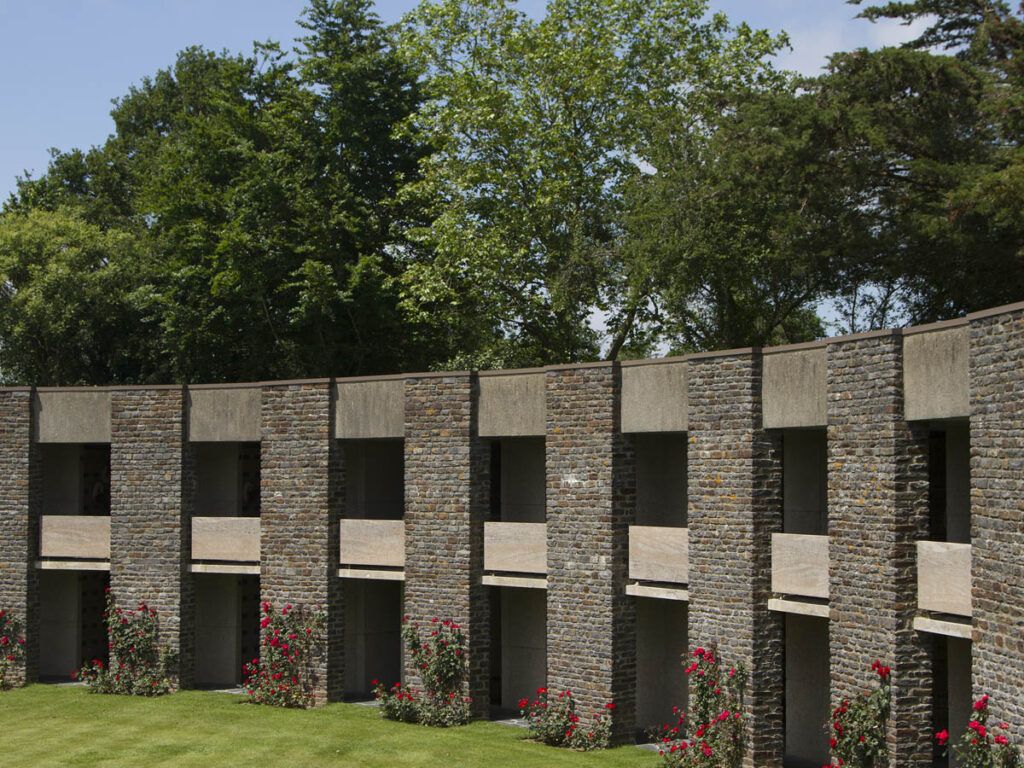
Huisnes-sur-Mer Village
Huisnes-sur-Mer is a small village located near the famous Mont-Saint-Michel in the Normandy region. The cemetery sits on Mont d’Huisnes, a hill that provides views of the surrounding countryside.
The village itself experienced the effects of war but has since become known primarily for hosting this significant memorial site. Its proximity to Mont-Saint-Michel means many visitors combine both locations in their travels.
For such a small community, Huisnes-sur-Mer carries an outsized historical importance. When you visit, you’ll find a quiet place where the focus remains on remembrance rather than tourism.
The relationship between the village and the cemetery symbolizes the post-war healing process as former enemies worked to honor their dead with respect and dignity.
Design and Layout
The Mont-de-Huisnes German War Cemetery features a unique circular design unlike any other military cemetery in Normandy. Built into a 30-meter hill, this remarkable structure serves as both memorial and mausoleum for fallen German soldiers.
The Ossuary and Bone Preservation
Inside this solemn structure, you’ll find the remains of 11,956 German soldiers who died during World War II. The cemetery functions as an ossuary, with remains carefully preserved in a series of chambers. The layout consists of two circular floors, each containing 34 crypts. Each crypt houses the bones of approximately 180 soldiers.
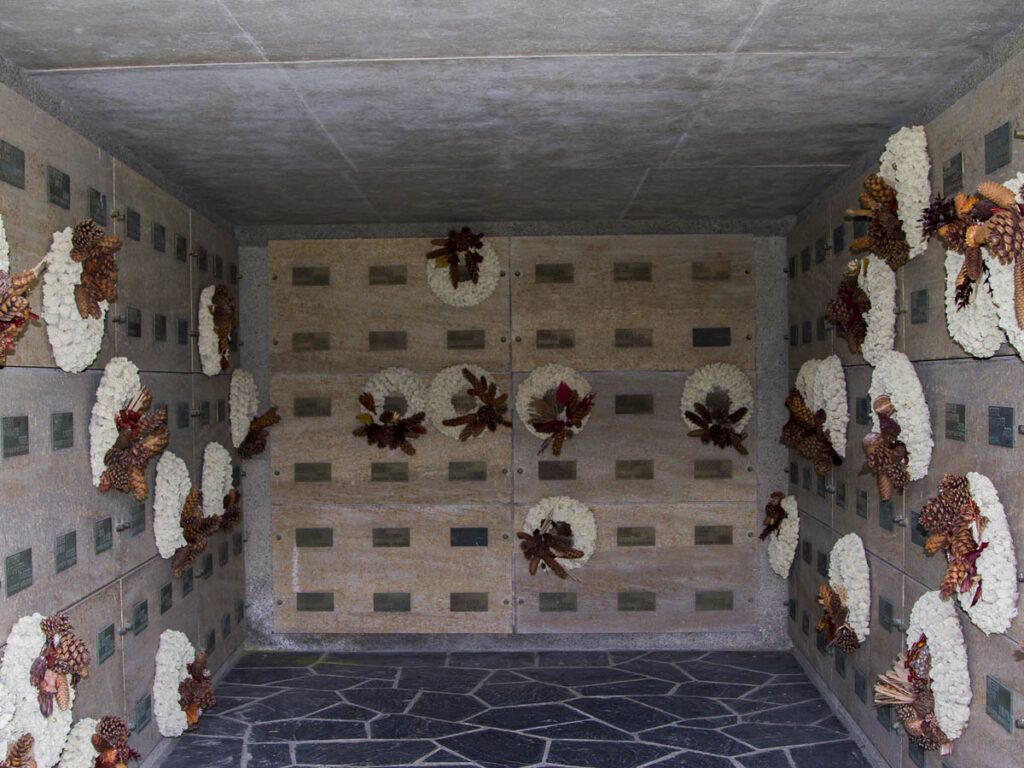
Unlike traditional cemeteries with individual graves marked by headstones, Mont-de-Huisnes uses this collective approach to honor the dead. The German War Graves Commission (Volksbund Deutsche Kriegsgräberfürsorge) maintains the site with great care and respect.
When you visit, you’ll notice the respectful simplicity of the bone preservation method. Names of the deceased are inscribed on bronze plaques, allowing families to locate their loved ones.
Architectural Features
The architecture of Mont-de-Huisnes is both functional and symbolic. The circular design creates a sense of unity and peace. At the center of the structure lies a garden with a prominent white cross, visible as you approach the monument.
Two galleries open toward the inside of the monument, creating a contemplative space. The mausoleum’s circular shape allows visitors to walk completely around both levels, viewing the crypts and taking in the solemn atmosphere.
The stone construction blends harmoniously with the natural hill, making the cemetery appear as if it has always been part of the landscape. Large windows allow natural light to filter in, creating shifting patterns throughout the day.
From the elevated position, you can enjoy views of the surrounding Normandy countryside and even glimpse Mont-Saint-Michel in the distance on clear days.
Remembrance and Education
Mont-de-Huisnes German War Cemetery offers powerful opportunities for reflection and learning. This unique circular mausoleum not only preserves the memory of the fallen but serves as an educational resource about the human cost of war.
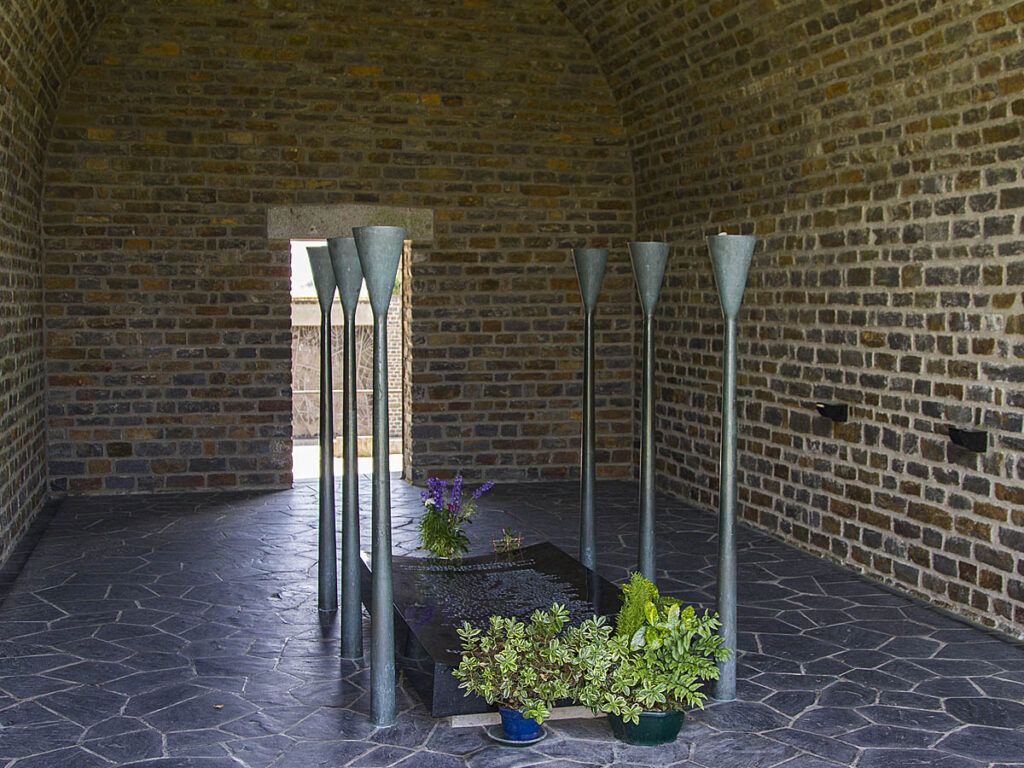
Memorial Services
Throughout the year, several commemorative events take place at Mont-de-Huisnes. The most significant service occurs on Germany’s National Day of Mourning (Volkstrauertag) in November, when representatives from German and French governments gather to honor the dead.
You can attend these solemn ceremonies, which often include military honors, wreath-laying, and speeches focusing on reconciliation. The services are open to the public and provide a moving experience of international healing.
Local schools sometimes hold special remembrance events here, particularly around the D-Day anniversary. If you’re interested in attending a service, check with the German War Graves Commission (Volksbund Deutsche Kriegsgräberfürsorge) website for upcoming dates.
Educational Resources
The cemetery offers informative panels that explain the history of the site and provide context about the 11,956 German soldiers buried here. As you explore, you’ll find detailed information about how WWII soldier remains were recovered, identified, and ultimately interred in this unique mausoleum.
The visitor center houses documents, photographs, and personal effects that humanize the war experience. Educational materials are available in multiple languages, making them accessible to international visitors.
For researchers, a database contains military records of those interred here. Recent partnerships with universities like the University of Wisconsin-Madison have supported DNA analysis projects to identify previously unknown soldiers.
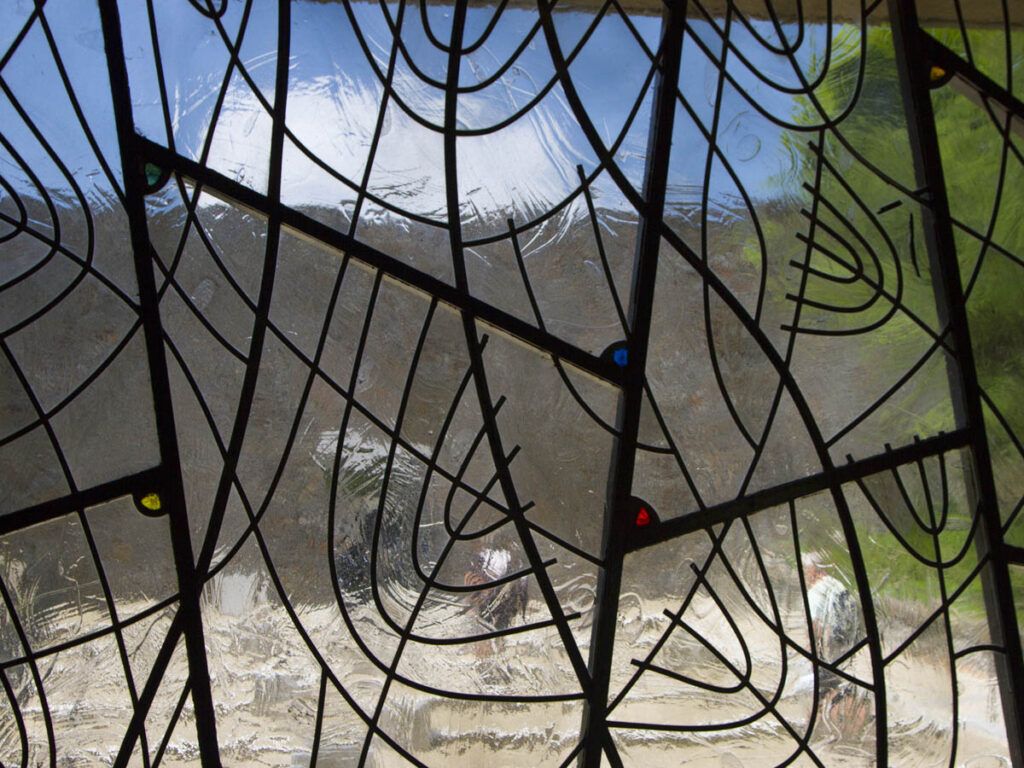
You can request guided tours with knowledgeable historians who provide insights beyond what’s on the information panels. These tours must be arranged in advance through the cemetery office.
Preservation Efforts
The Mont-de-Huisnes German War Cemetery undergoes continuous preservation work to honor those buried there. Both physical maintenance and historical research ensure the site remains a dignified resting place and valuable historical resource.
Cemetery Maintenance
The German War Graves Commission (Volksbund Deutsche Kriegsgräberfürsorge) oversees the upkeep of this unique circular mausoleum. Unlike traditional cemeteries with individual graves, Mont-de-Huisnes requires specialized care for its architectural structure. Regular inspections check for water damage, structural integrity, and preservation of the memorial chamber.
Volunteer groups, often including German students, participate in maintenance programs during summer months. These programs not only help with physical upkeep but promote international understanding.
When you visit, you’ll notice the meticulously maintained gardens surrounding the cemetery. The Commission preserves both the physical site and the solemn atmosphere that makes this place so moving.
Research and Identification
Ongoing research efforts continue to identify soldiers still listed as “unknown.” The German War Graves Commission works with military archives, civilian researchers, and sometimes the U.S. Government to match remains with historical records.
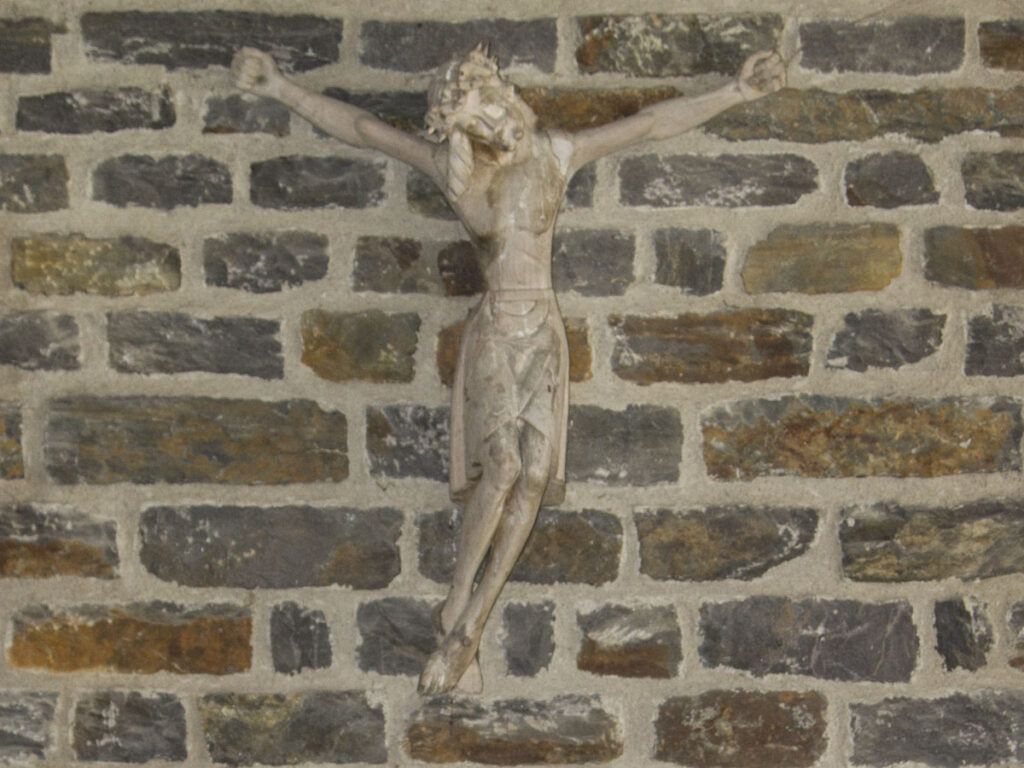
Family members seeking information about relatives can access burial records through the Commission’s database. This research helps provide closure for families who lost loved ones during the Normandy campaign.
Modern DNA testing has occasionally helped identify previously unknown soldiers. When new identifications occur, the Commission updates records and notifies family members when possible.
You can participate in this preservation of memory by recording your visit in the guest book or supporting the Commission’s work through donations.
Stories of the Fallen
Behind the 11,956 graves at Mont-de-Huisnes lie thousands of personal stories that represent the human cost of war. These stories help visitors connect with the individuals who lost their lives during World War II and understand the ongoing impact on families searching for answers about their loved ones.
Individual Soldier Accounts
Among the thousands buried here, each soldier had a unique story. One such account is of Ludwig Schmidt, a young German medic who treated wounded soldiers on both sides before losing his life during the Allied advance. His diary, discovered decades later, revealed his inner conflict about the war.
You’ll find markers for several Russian volunteers who fought alongside German forces, highlighting the complex alliances of WWII. Their presence tells a different side of the war story than what’s often presented in history books.
Some graves belong to soldiers identified only recently through DNA testing, similar to the case of Lawrence S. Gordon. Gordon, a U.S. soldier, was mistakenly buried as a German before being identified through DNA work partly conducted at UW-Madison.
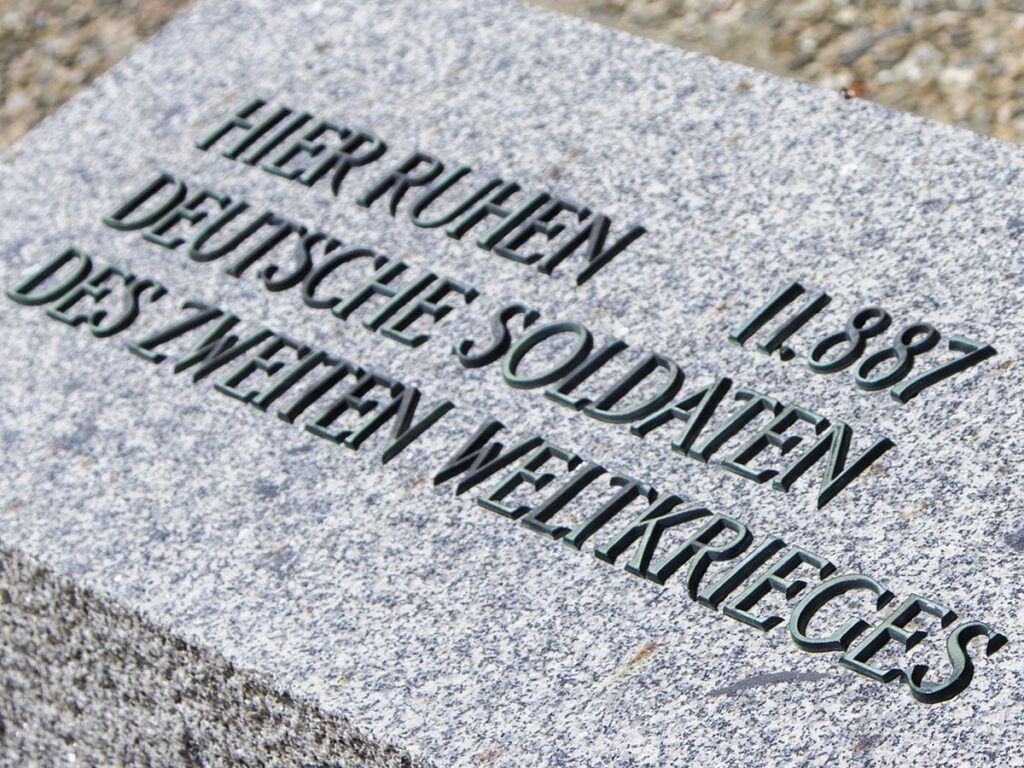
Families’ Searches
Many families spent decades searching for information about their missing loved ones. When you walk through the cemetery, remember that each name represents a family’s long journey for closure.
In the visitor center, you’ll find letters from German mothers, wives, and children who traveled to Huisnes-sur-Mer after learning their relative was buried here. Some families visit annually, placing flowers and mementos by the crypts.
The cemetery records office helps connect families with their history. They’ve assisted hundreds of relatives from Germany and beyond in locating burial sites and providing service details of the fallen.
Modern DNA technology has brought answers to families who never knew what happened to their soldiers. These emotional reunifications continue today, as research teams from Madison and other institutions work to match remains with family members.
German Equipment and Remains
While the Mont-de-Huisnes Cemetery primarily serves as a solemn resting place, some exhibits display German military equipment and personal belongings found in the Normandy region. These artifacts offer visitors a glimpse into the lives of those who fought and died during the Second World War.
Armored Vehicles and Ordnance
Outside the cemetery grounds, you’ll find a small display of German military hardware. Two partially restored Panzer tank components show the engineering prowess of German armaments. These vehicles once rumbled through the Norman countryside during the fierce battles following D-Day.
A collection of defused ordnance, including artillery shells and grenades, demonstrates the destructive power deployed in the region. Information panels detail how these weapons were used by German forces defending against Allied advances from the beaches.
Look for the rare bronze artillery sight, one of few surviving examples that wasn’t melted down for the war effort. This precision instrument reveals the technical sophistication of German military equipment during the period.
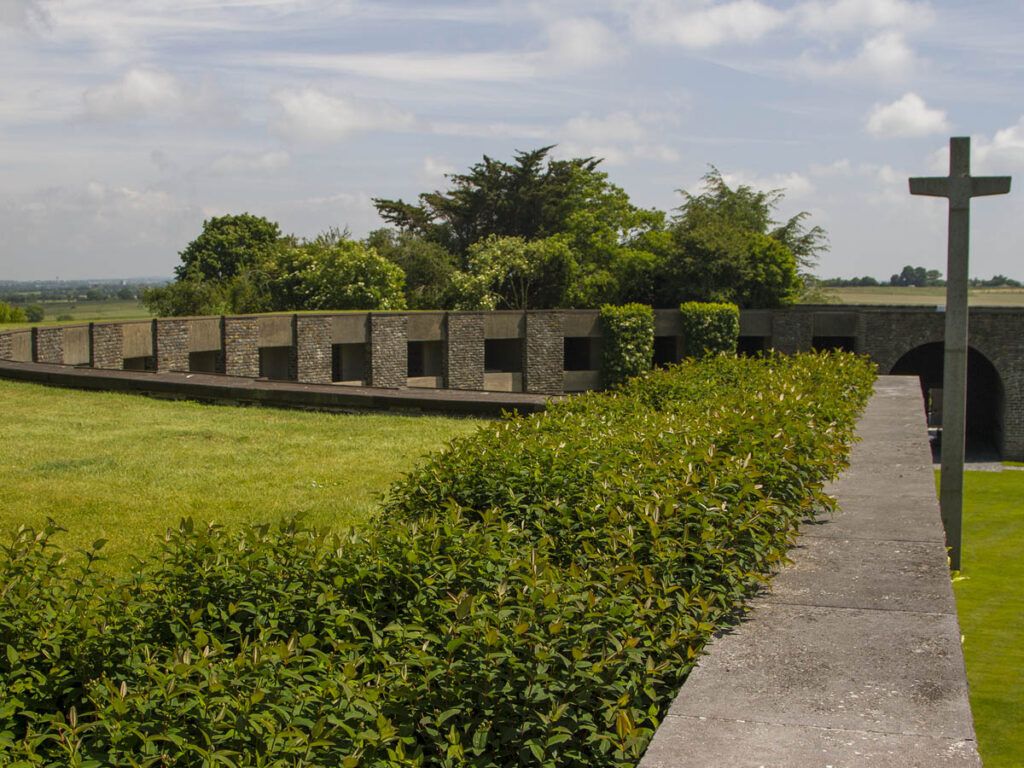
Personal Items and Uniforms
Inside the memorial building, glass display cases house personal effects recovered from German soldiers. You’ll see weathered identification tags, family photographs, and letters that humanize those interred here.
Several well-preserved uniforms show the different branches of service represented among the cemetery’s 11,956 burials. The meticulous details of these uniforms—from infantry feldgrau to Luftwaffe blue—reflect the military culture from which these soldiers came.
Most poignant are the everyday items: combs, razors, cigarette cases, and religious medallions. These simple possessions remind you that each burial represents an individual with hopes and fears, not merely a casualty statistic.
Visitors often find the handwritten letters most moving. Though written in German, translations highlight messages to loved ones in Berlin and throughout Germany, revealing the human cost of war.
Visiting Mont-de-Huisnes
Mont-de-Huisnes German War Cemetery offers a unique and somber experience for visitors. This circular mausoleum-style cemetery contains the remains of nearly 12,000 German soldiers and civilians who died during World War II.
The cemetery is located on Mont d’Huisnes, about one kilometer north of the small commune of Huisnes-sur-Mer in Normandy, France. You can reach it by car from nearby towns, with Mont-Saint-Michel only about 15 minutes away by vehicle.
Parking is available on site, though limited during peak tourist season. Public transportation options are sparse in this rural area, so renting a car is your best option.
The cemetery is wheelchair accessible with ramps and paved pathways throughout most of the site. The unique circular design makes navigation straightforward, with the central memorial serving as a reference point.
Signs are primarily in French and German, but many information panels include English translations as well.
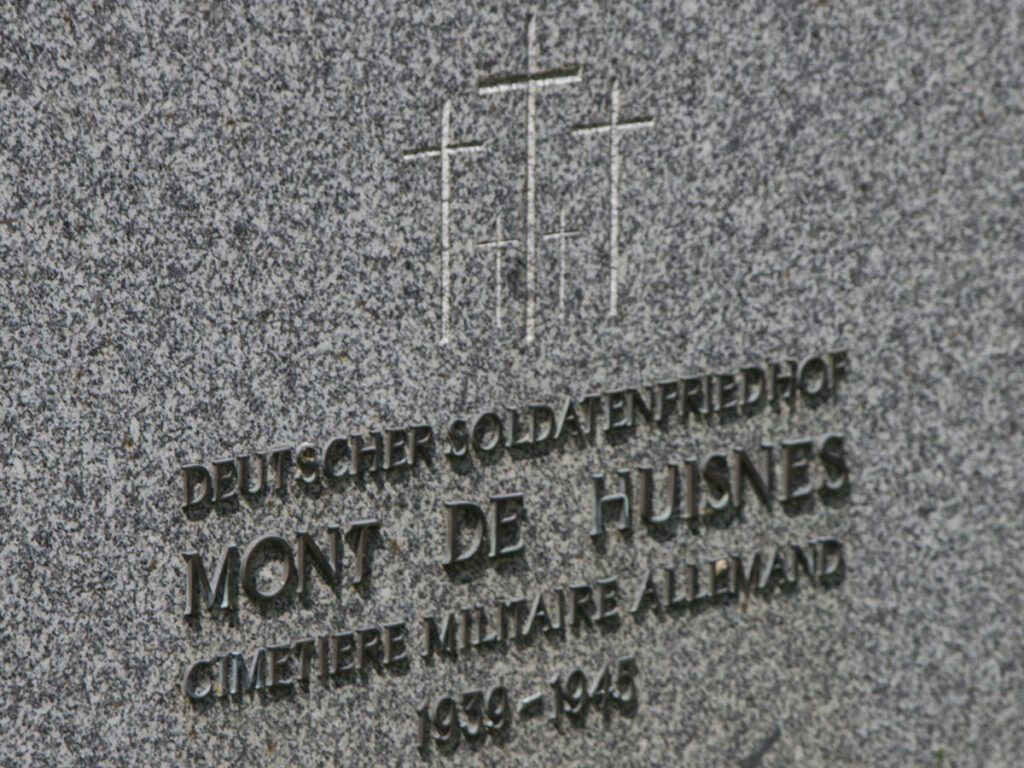
Best Times to Visit
The cemetery is open year-round, but weather conditions vary significantly by season:
Spring (April-June):
- Moderate temperatures (50-70°F)
- Beautiful blooming flowers
- Fewer crowds than summer
- Occasional rain showers
Summer (July-August):
- Warmest temperatures (60-80°F)
- Busiest tourist season
- Extended daylight hours
- Occasional crowding due to proximity to Mont-Saint-Michel
Fall (September-October):
- Mild temperatures (45-65°F)
- Fewer visitors
- Beautiful autumn colors
- Often clearer skies
Winter (November-March):
- Cold temperatures (30-45°F)
- Very few visitors
- Potential for fog and limited visibility
- Shorter opening hours
Early mornings or late afternoons typically offer the most peaceful experience with better lighting for photography.
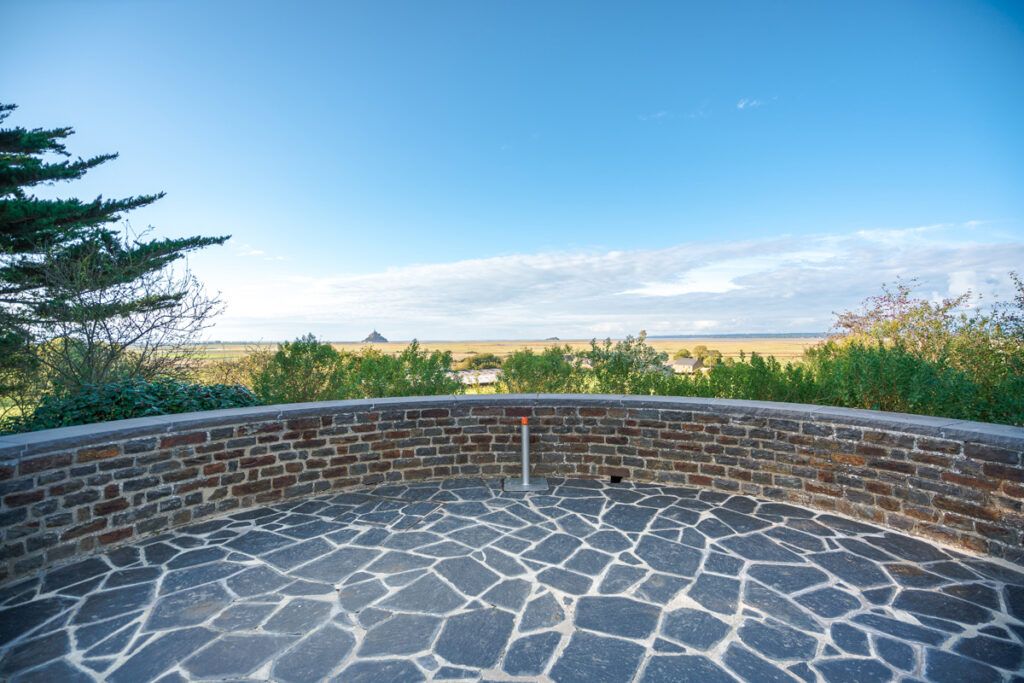
Visitor Etiquette
As this is a war cemetery, proper respect is essential during your visit. Keep your voice low and maintain a dignified demeanor throughout the grounds. This is a place of remembrance and reflection.
Photography is permitted, but avoid using flash inside the crypt chambers. Selfies and casual photos are generally considered inappropriate given the solemn nature of the site.
Dress modestly and comfortably for your visit. The cemetery involves some walking, so appropriate footwear is recommended.
Do not touch or place items on the grave markers unless you have a direct connection to the deceased. While leaving flowers is generally acceptable, check with staff first.
Children are welcome but should be supervised and explained the significance of the site beforehand.
Nearby Accommodations
You’ll find several accommodation options in the surrounding area:
In Huisnes-sur-Mer:
- Limited guesthouses and B&Bs
- Quiet, rural setting
- Budget-friendly options
Near Mont-Saint-Michel (15 min drive):
- Wide range of hotels and guesthouses
- Various price points from budget to luxury
- Busy during peak tourist season
- Advance booking highly recommended
- Beautiful views of the famous abbey
Avranches (20 min drive):
- Mid-sized town with more hotel options
- Restaurants and amenities
- Generally more affordable than Mont-Saint-Michel
- Good base for exploring the region
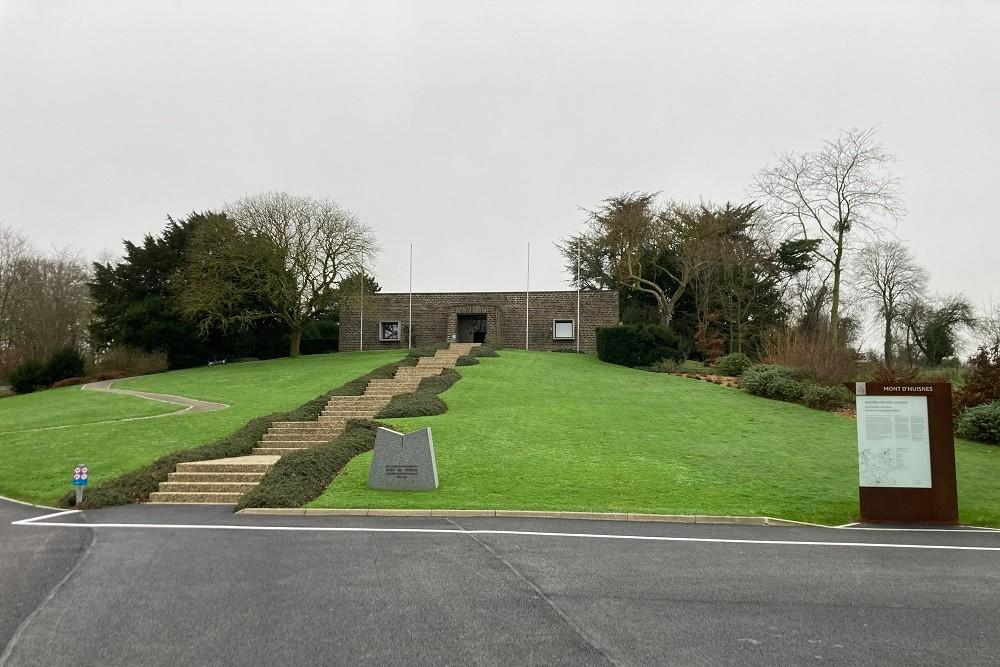
Tours
While formal tours specifically for Mont-de-Huisnes are limited, several options can enhance your visit:
Self-guided tours:
- Free brochures available at entrance
- Informative panels throughout the site
- Allow 1-2 hours for a thorough visit
Private guides:
- Several local historians offer specialized WWII tours
- Must be booked in advance
- Often include transportation from nearby towns
- Typically include multiple sites in the region
Regional WWII tours:
- Departure points from major Normandy cities
- Often combine several military cemeteries and sites
- Full-day or multi-day options available
- Some include Mont-Saint-Michel visits as well
Recommended D-Day Tours from Paris:
- From Paris: Normandy D-Day Beaches Day Trip
- From Paris: 2-Day Normandy & Brittany Tour
- Normandy American D-Day Experience (From Bayeux Station)
Recommended D-Day Tours from Bayeux:
- From Bayeux: American D-Day Sites in Normandy Full-Day Tour
- From Bayeux: American D-Day Sites in Normandy Half-Day Tour
- From Bayeux: Half-Day Normandy WWII Sidecar Tour
- Full-Day US Battlefields of Normandy Tour from Bayeux
Recommended Private D-Day Tours:
- From Paris: Normandy D-Day Landing Beaches Full-Day Tour
- From Rouen: Normandy D-Day Beaches Private Full-Day Tour
- Private Tour: Rouen, Bayeux, and Falaise Day Trip from Bayeux
- Normandy WWII Private Half-day Sidecar Tour From Bayeux
Recommended Band of Brothers Tours:
Contact the local tourism office for current tour information and pricing. Many visitors combine their cemetery visit with a trip to Mont-Saint-Michel for a meaningful day exploring both important sites.
Nearby Attractions
While visiting the Mont-de-Huisnes German War Cemetery, you’ll find several significant sites within a short drive. These nearby attractions offer both historical context and breathtaking scenery that complement your visit to the cemetery.
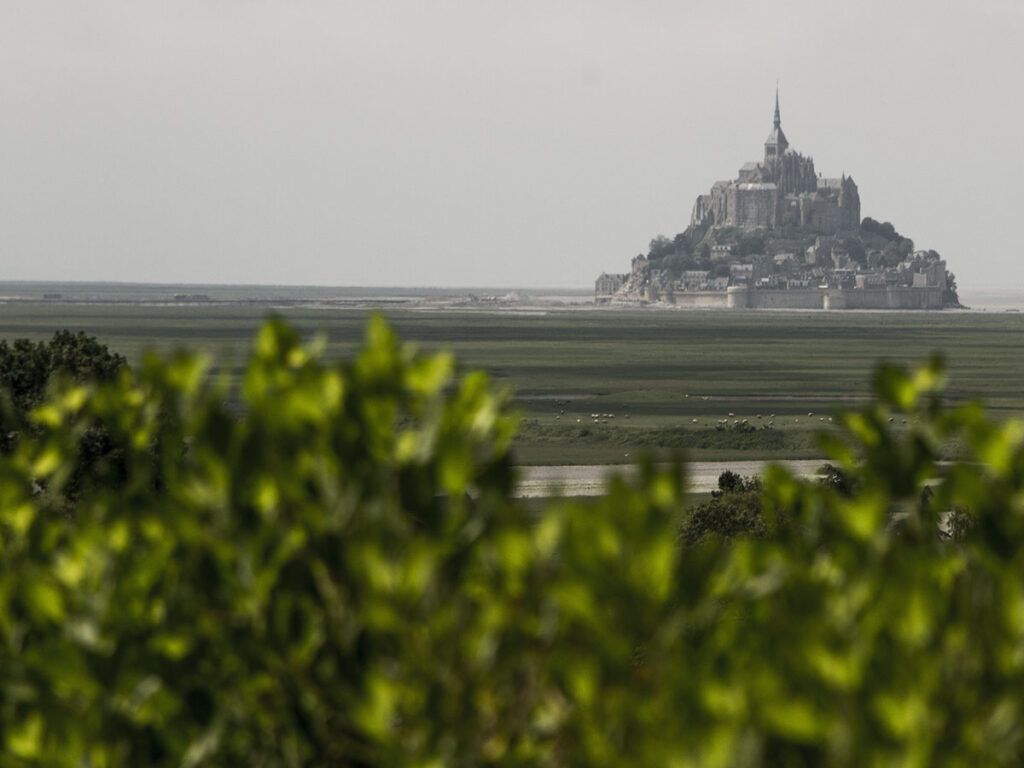
Mont Saint-Michel
Just a short distance from the German Ossuary at Huisnes-sur-Mer stands one of France’s most iconic landmarks. Mont Saint-Michel rises dramatically from the sea, its medieval abbey perched atop a rocky island. You can easily see why it’s one of France’s most visited attractions.
The island commune is connected to the mainland by a causeway, making it accessible regardless of the tides. As you approach, the stunning silhouette grows more impressive with each step.
Inside, you’ll find narrow winding streets lined with shops and restaurants leading up to the abbey. The abbey itself features remarkable Gothic architecture dating back to the 8th century.
Plan at least half a day here. The views from Mont Saint-Michel looking out toward Huisnes-sur-Mer provide a poignant contrast to the solemn cemetery you’ve just visited.
Brittany American Cemetery
Located in Saint-James, about 20 minutes from Huisnes-sur-Mer, the Brittany American Cemetery offers another perspective on World War II’s impact. This beautiful 28-acre cemetery holds the remains of 4,410 American soldiers who died during the Normandy campaign.
The pristine grounds feature perfectly aligned white marble crosses and Stars of David against immaculately maintained green lawns. A memorial chapel stands at the center, commemorating those who gave their lives.
Unlike the German mausoleum’s circular design, the American cemetery follows a traditional layout. The contrast between these final resting places is striking and thought-provoking.
Visitor facilities include a reception building with exhibits explaining the historical context of Operation Overlord and subsequent battles that liberated this region of France.
Why It’s Worth Visiting
The Mont-de-Huisnes German War Cemetery offers a truly unique historical experience. As the only German mausoleum in France, it stands apart from other war memorials you’ll encounter during your travels.
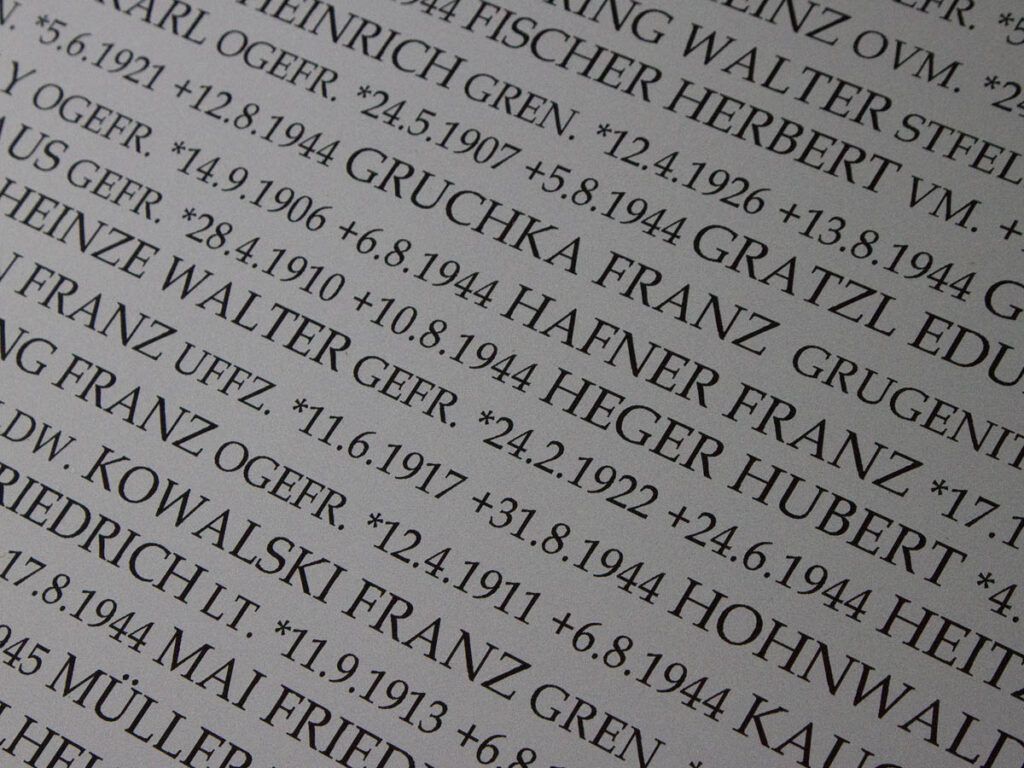
When you visit, you’ll find the final resting place for 11,956 German soldiers who fell during World War II. Most were transferred here from various French departments, creating a centralized memorial site.
The cemetery’s distinctive crypt-type design sets it apart from traditional military graveyards. This architectural choice creates a solemn and reflective atmosphere that helps you connect with the human cost of war.
From the viewing platform, you can take in the peaceful surroundings while contemplating the significance of this site. The quiet setting encourages a moment of reflection, regardless of your nationality or background.
Unlike many tourist attractions, this cemetery offers a profound connection to European history. You’ll gain perspective on how World War II affected communities across national boundaries.
The well-maintained grounds and thoughtful layout make it accessible for visitors of all ages. Even if you’re traveling with family, this site provides an educational opportunity to discuss complex historical events in a respectful setting.
While somber, your visit helps preserve the memory of those who lost their lives and supports ongoing peace efforts through remembrance and understanding.

